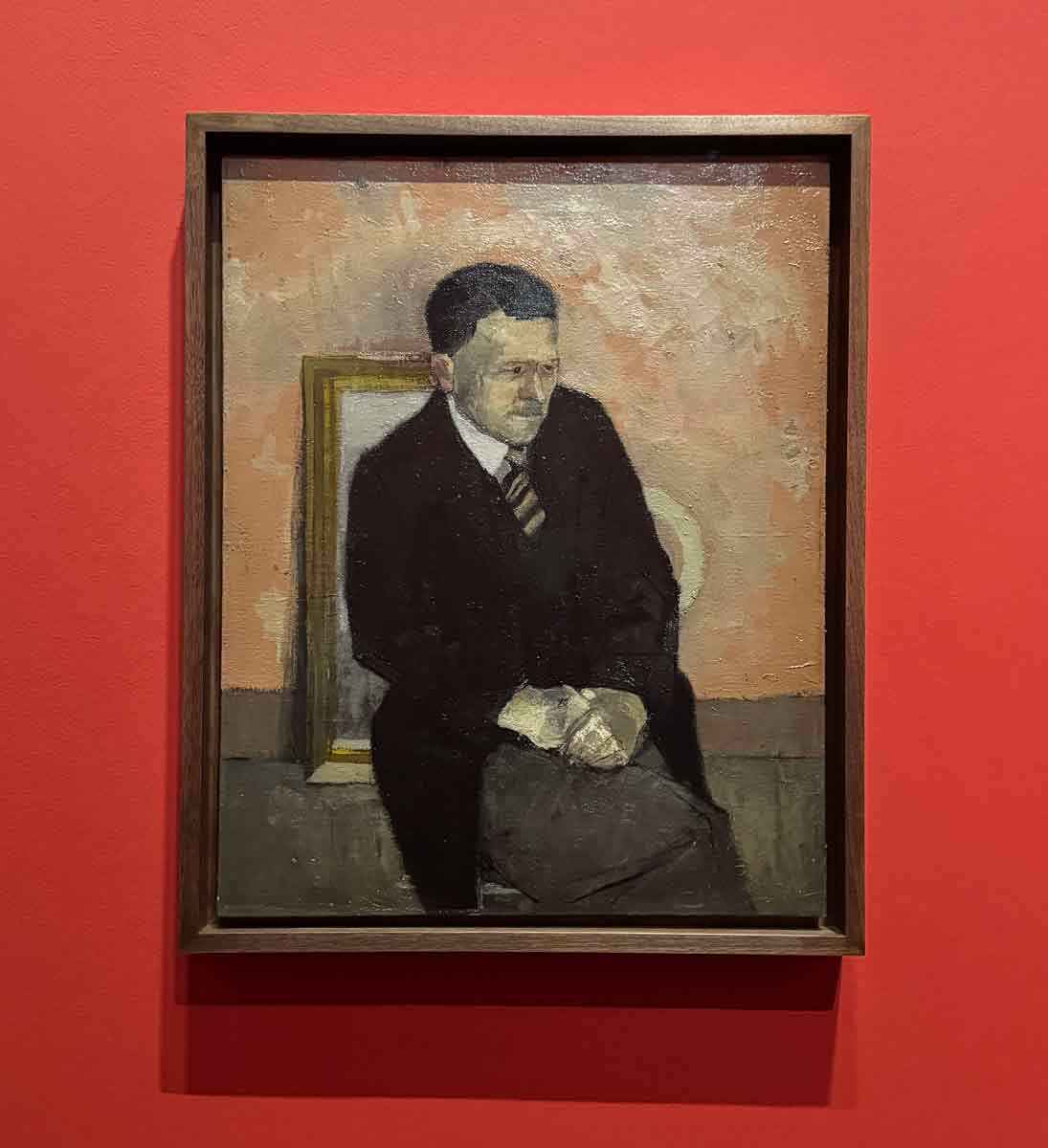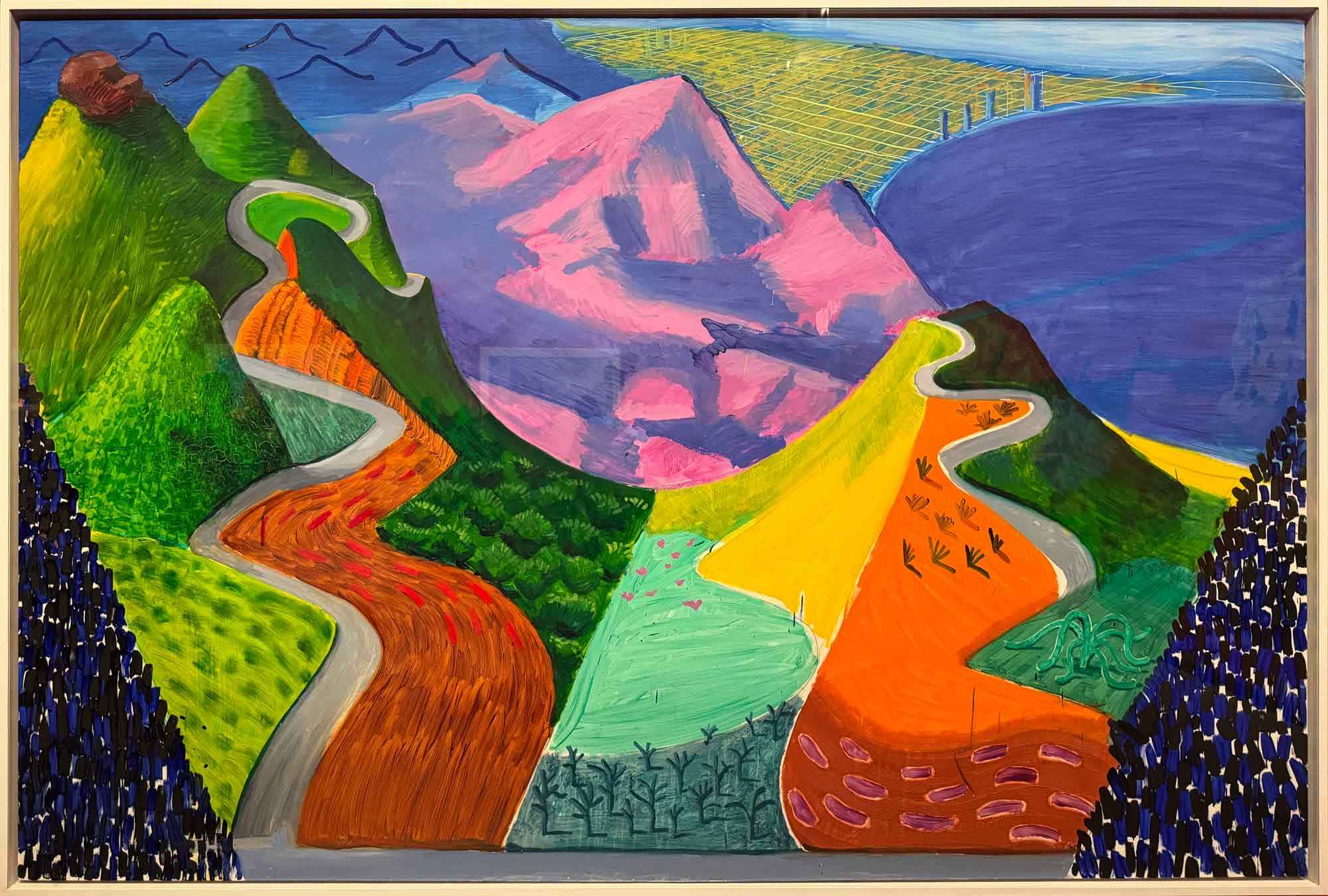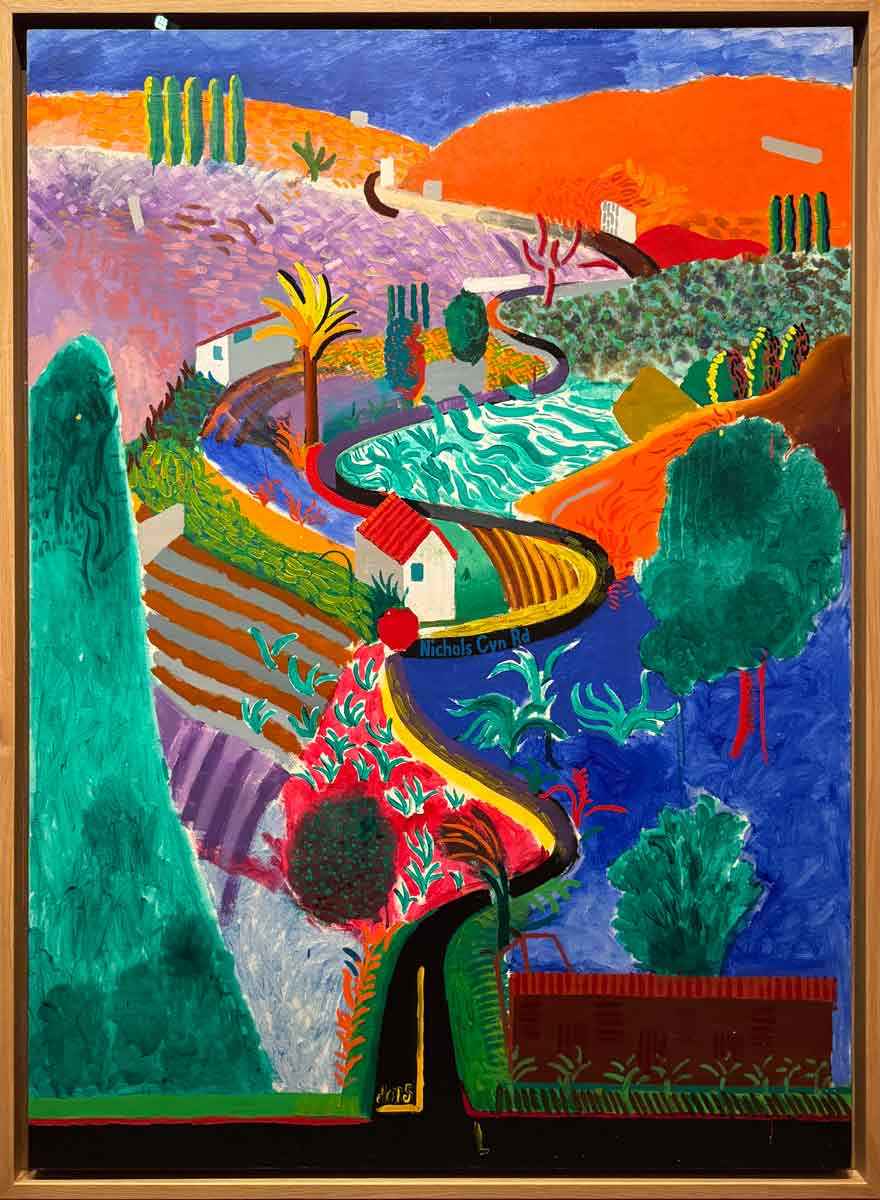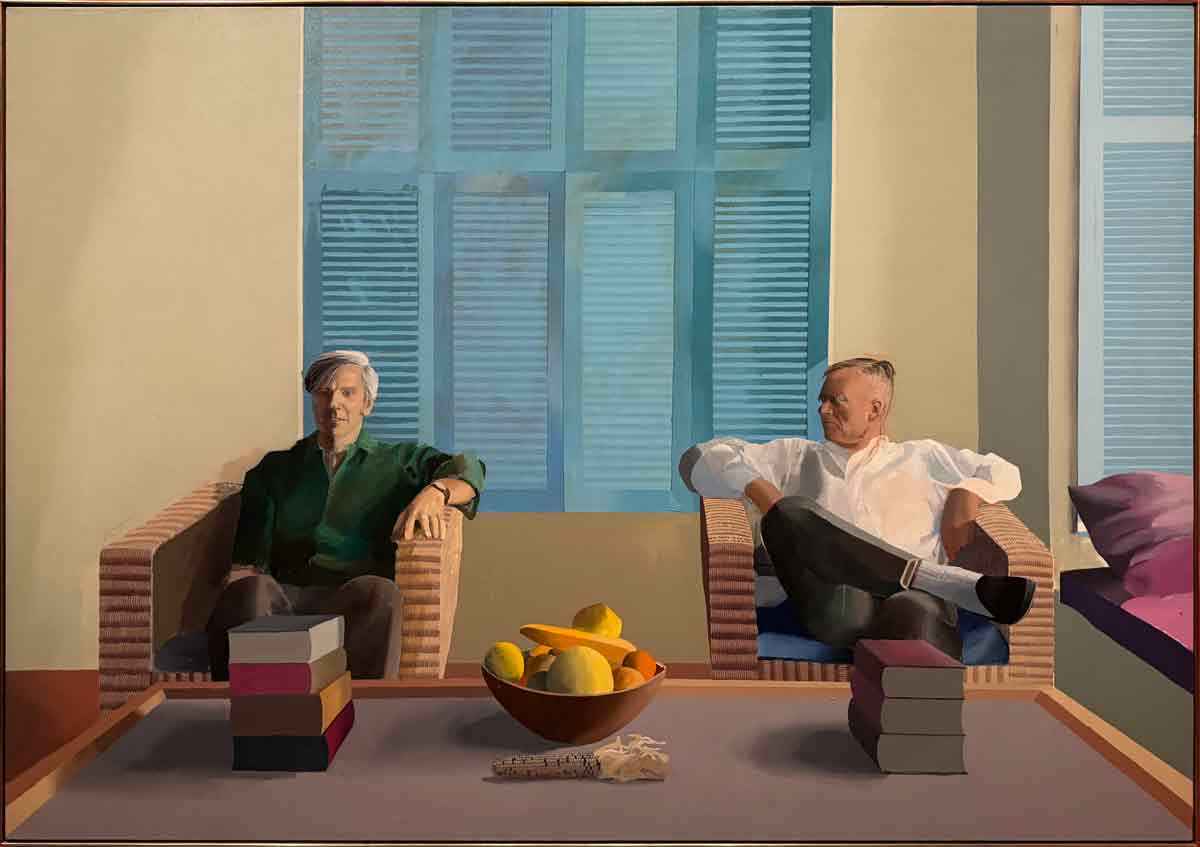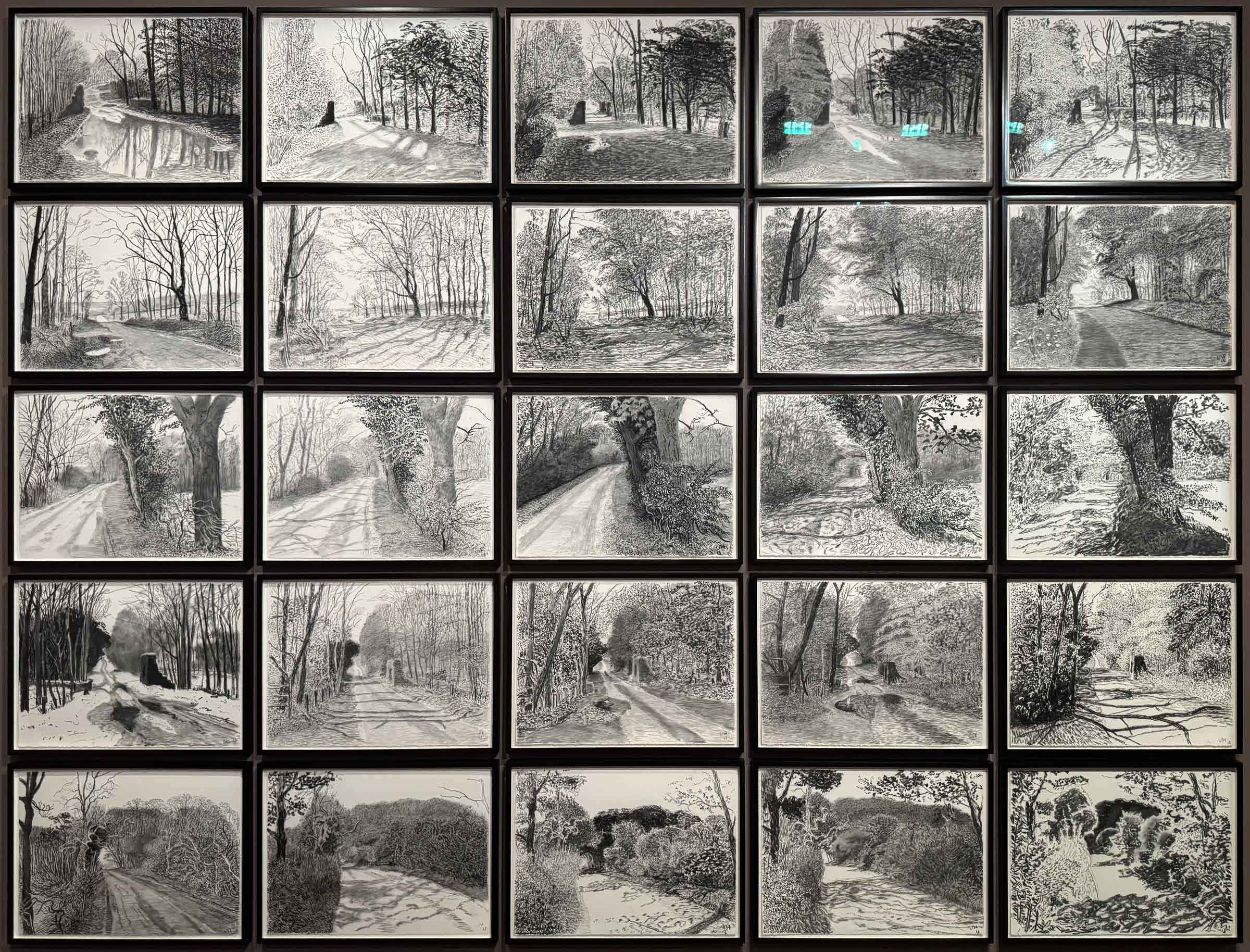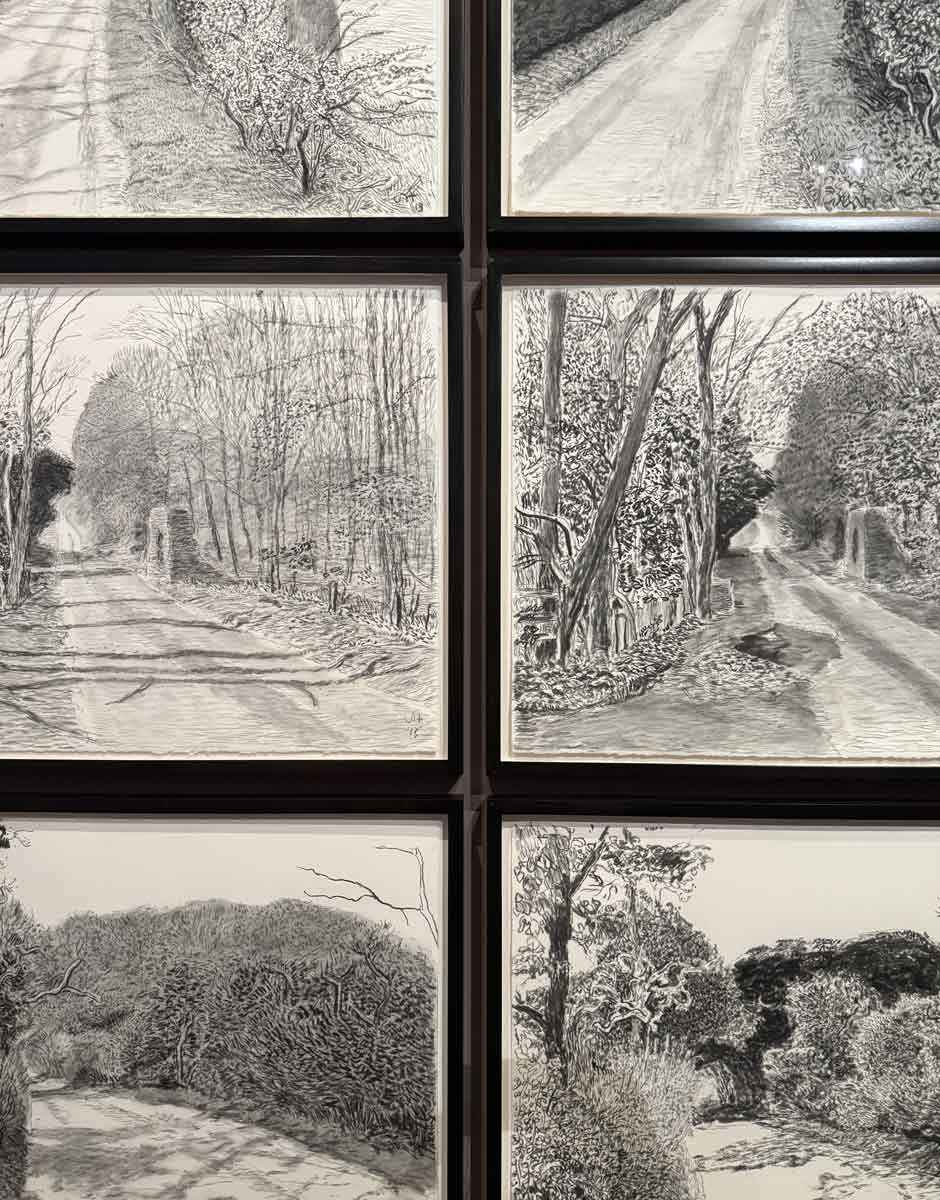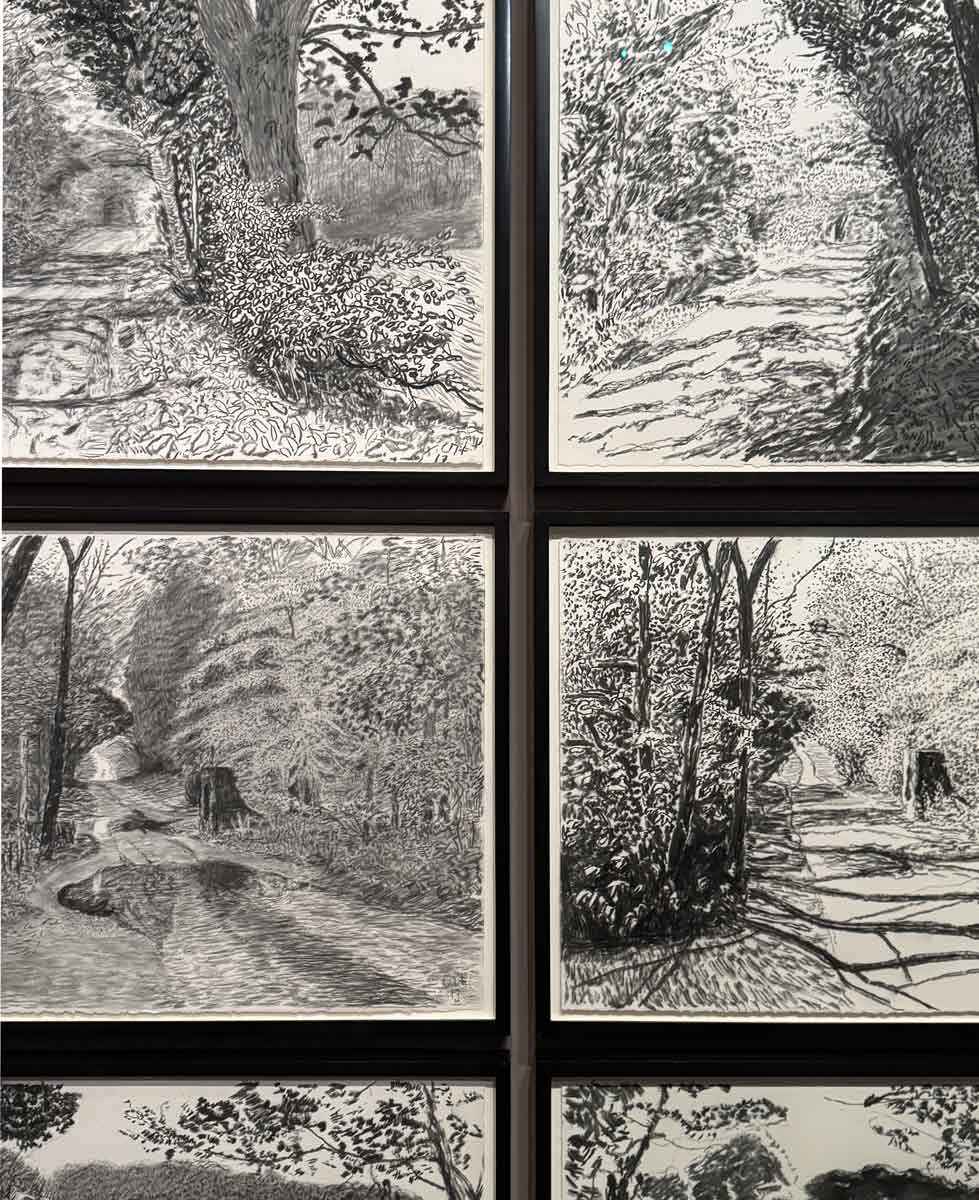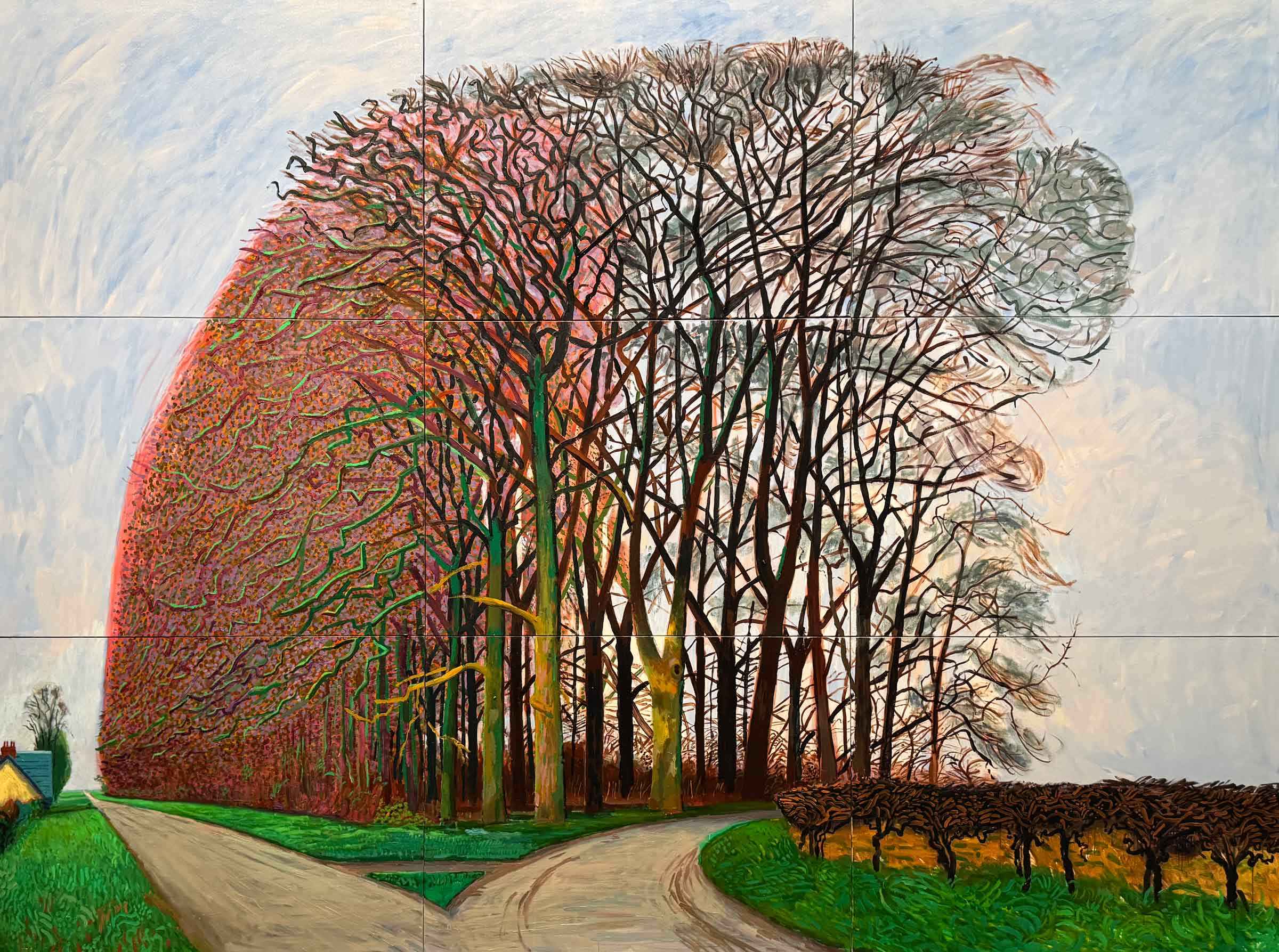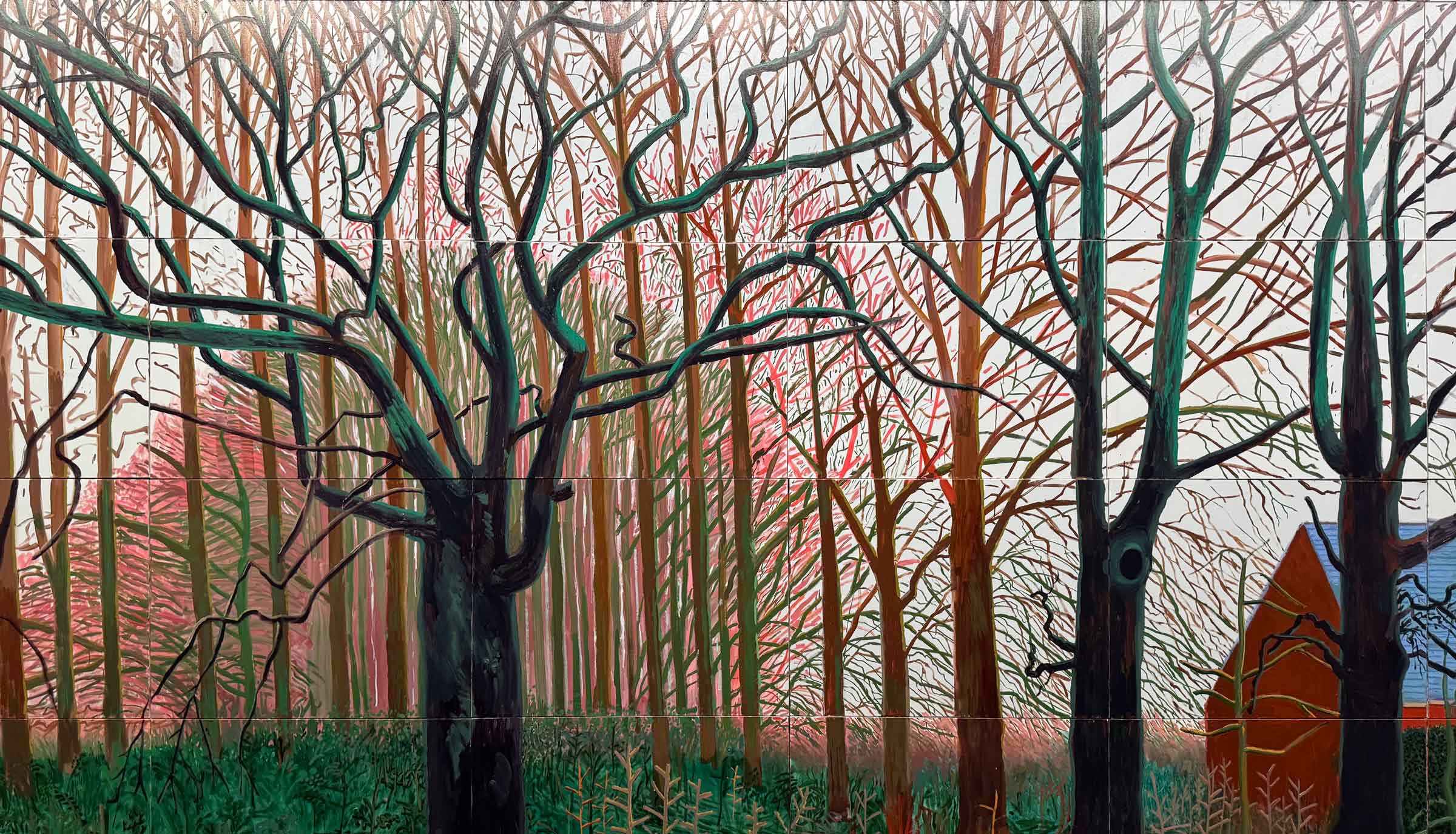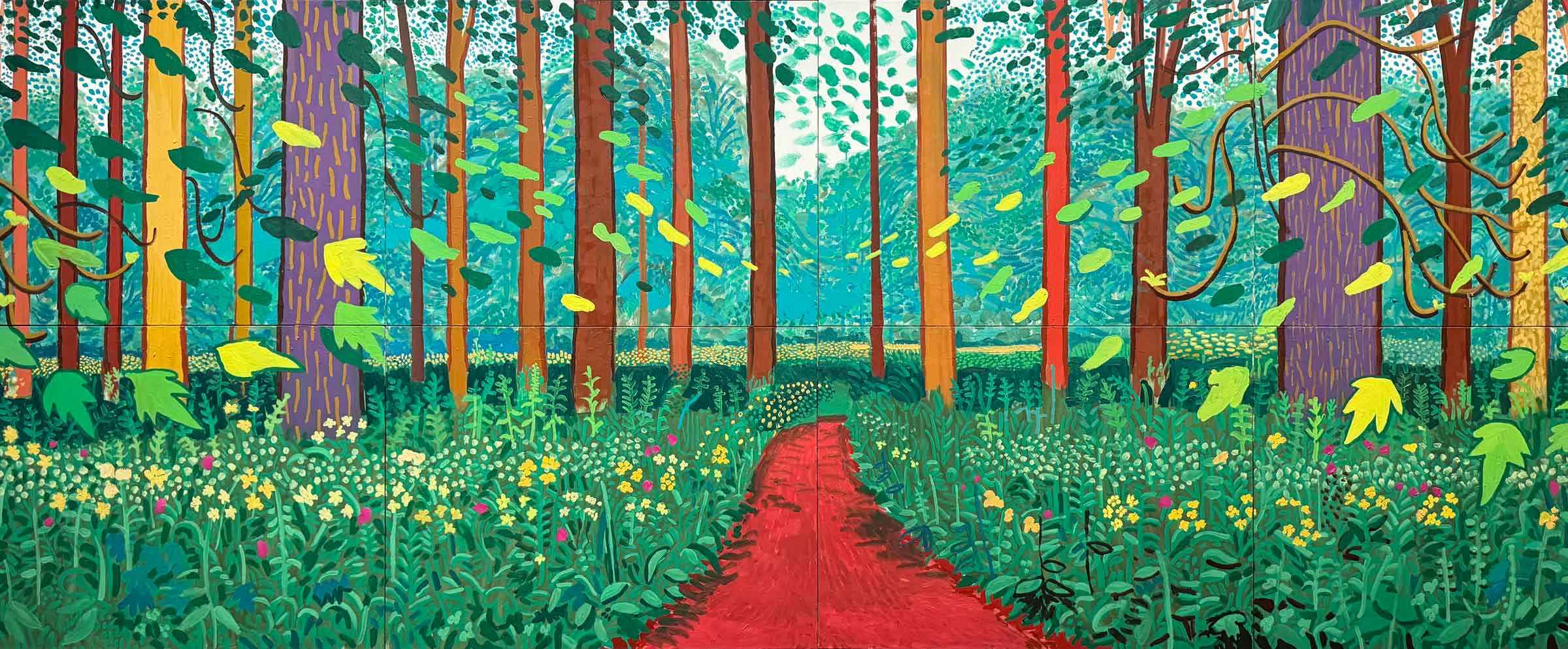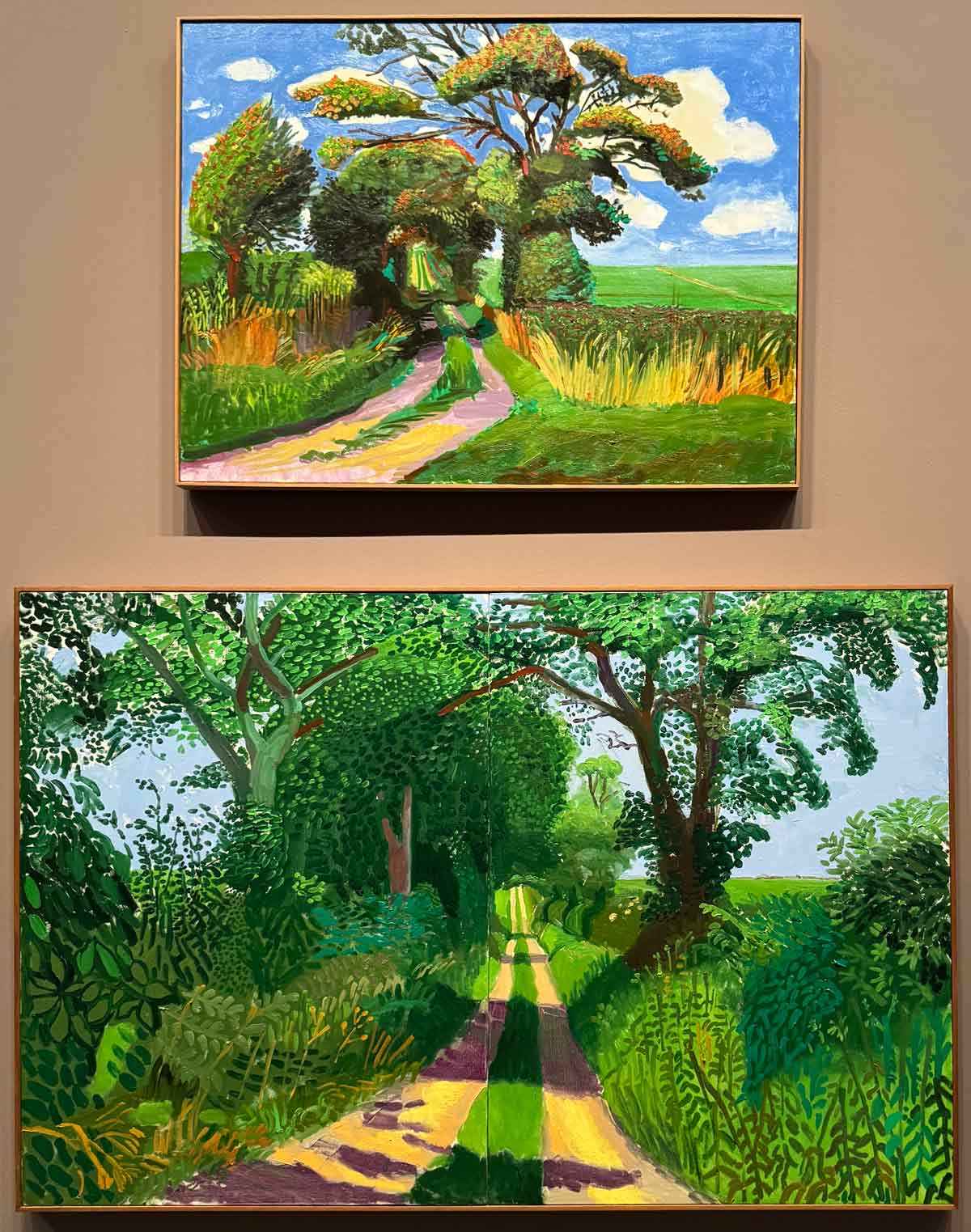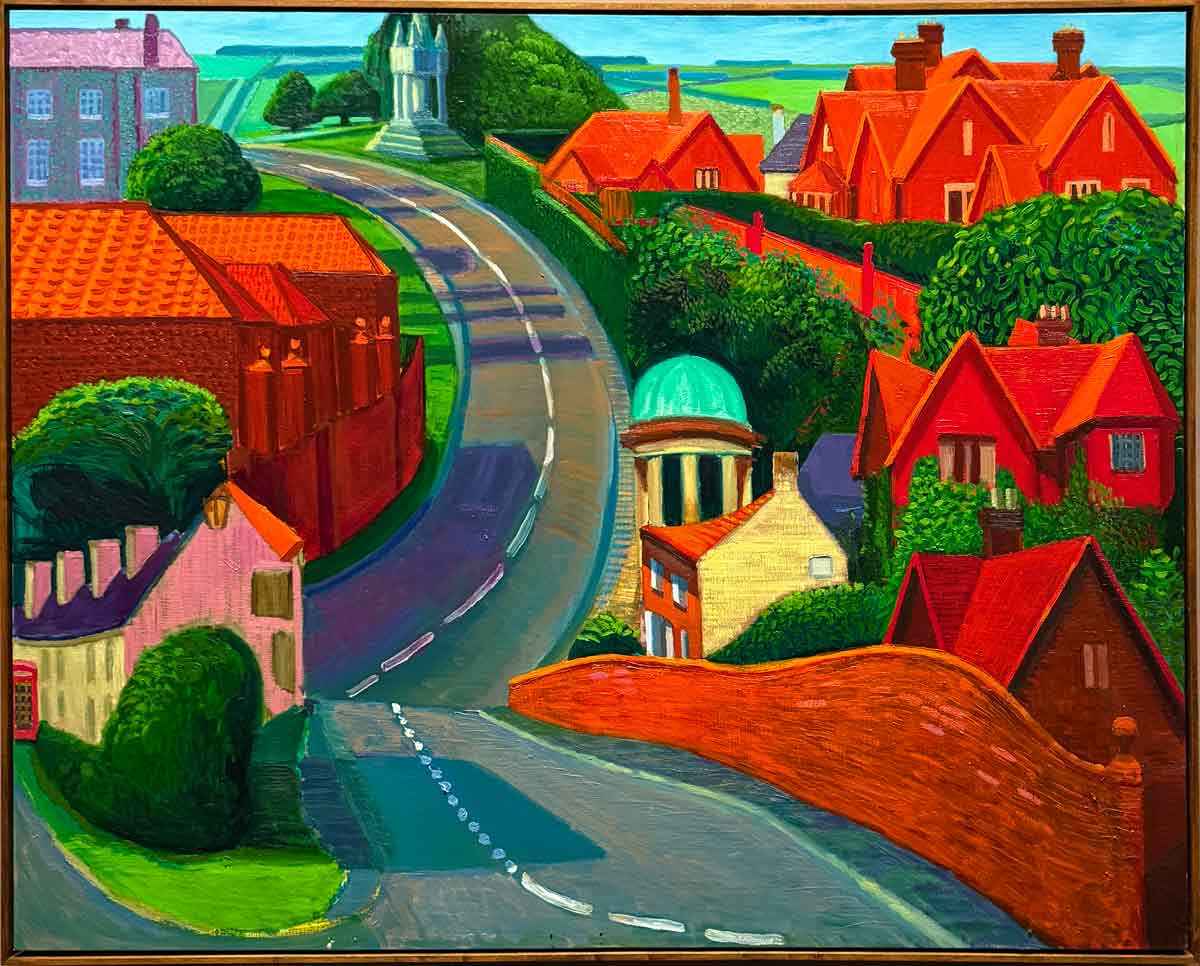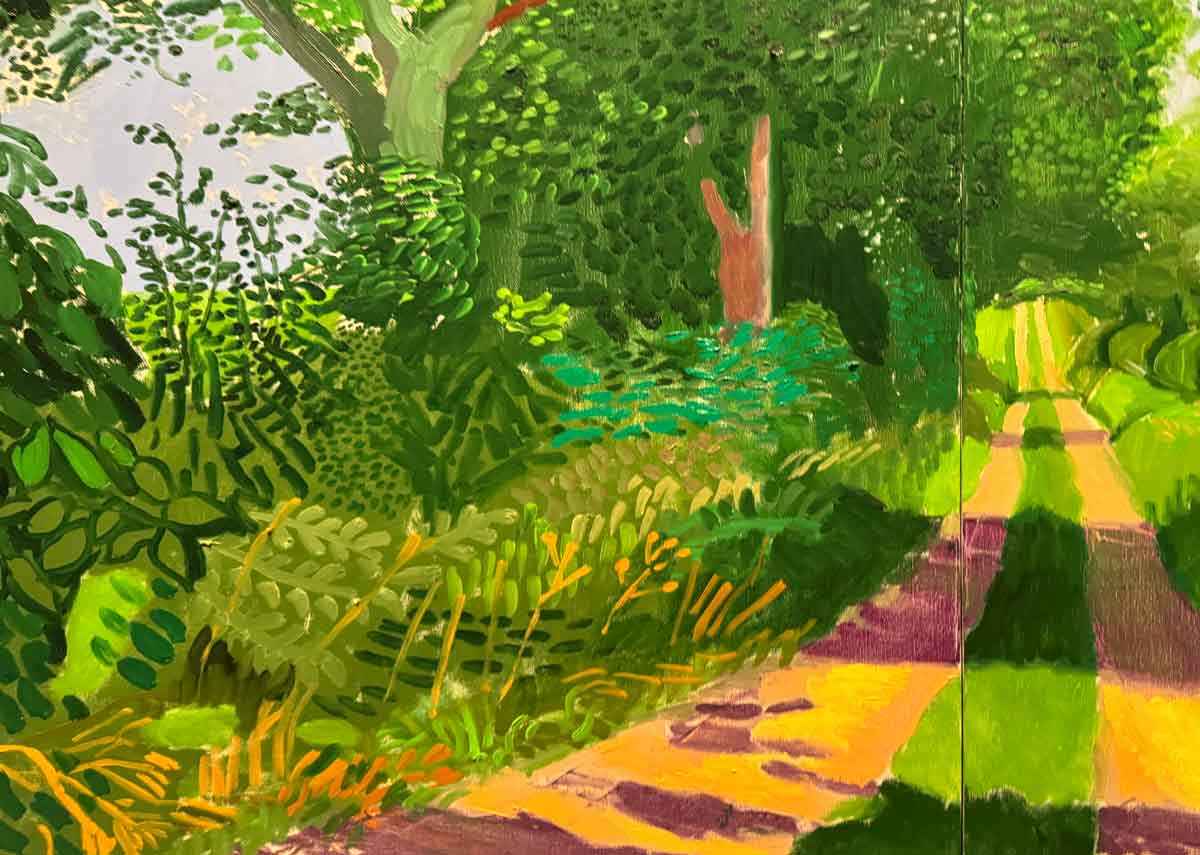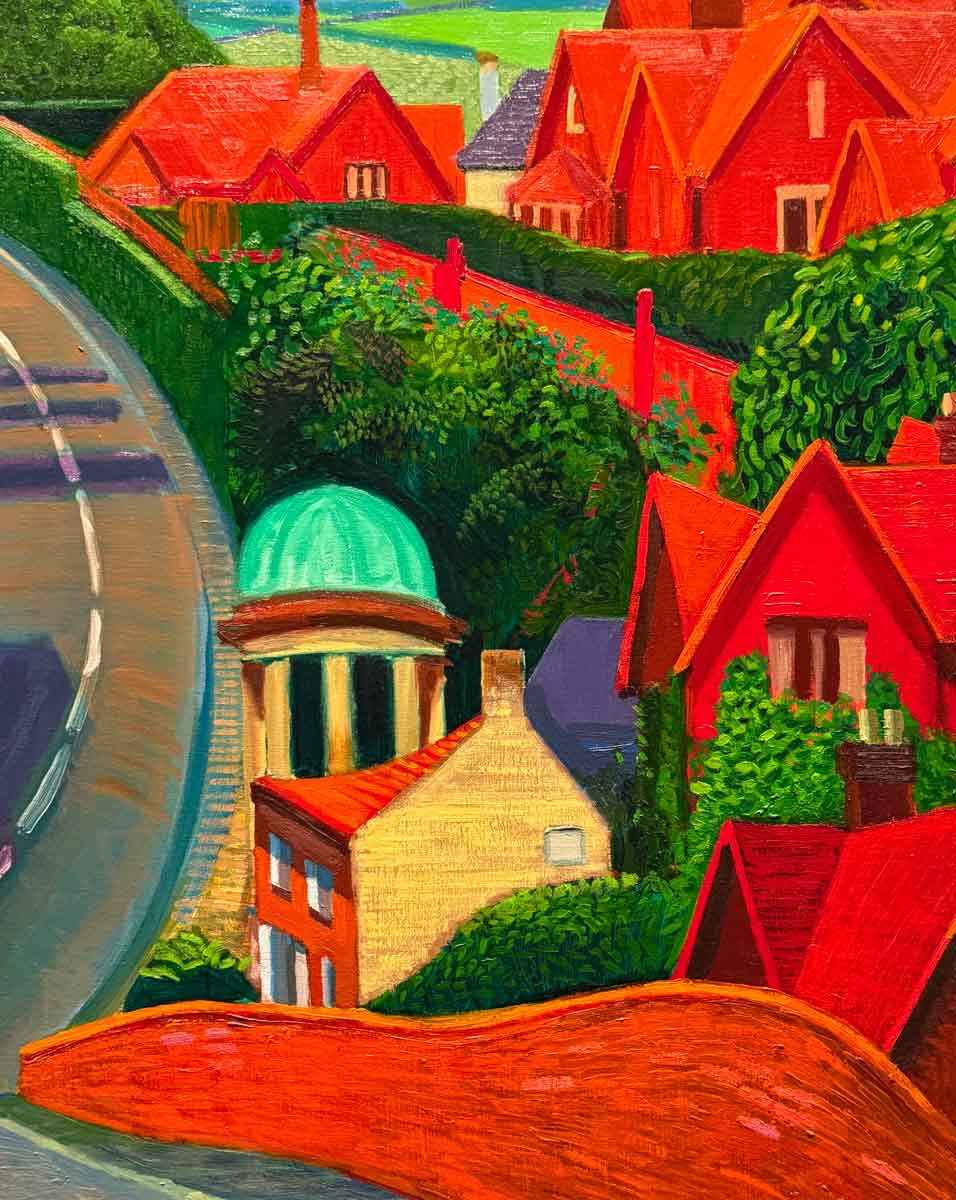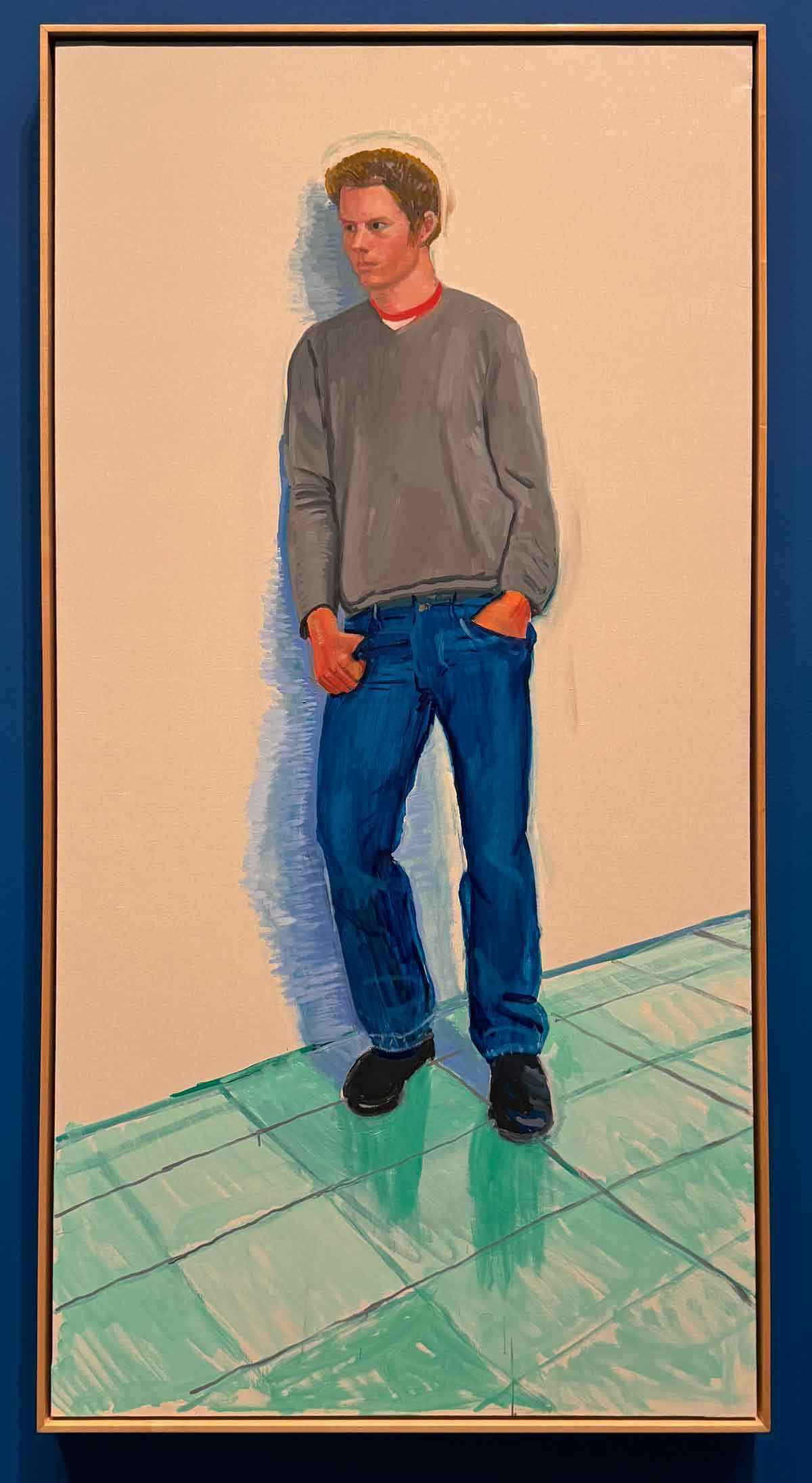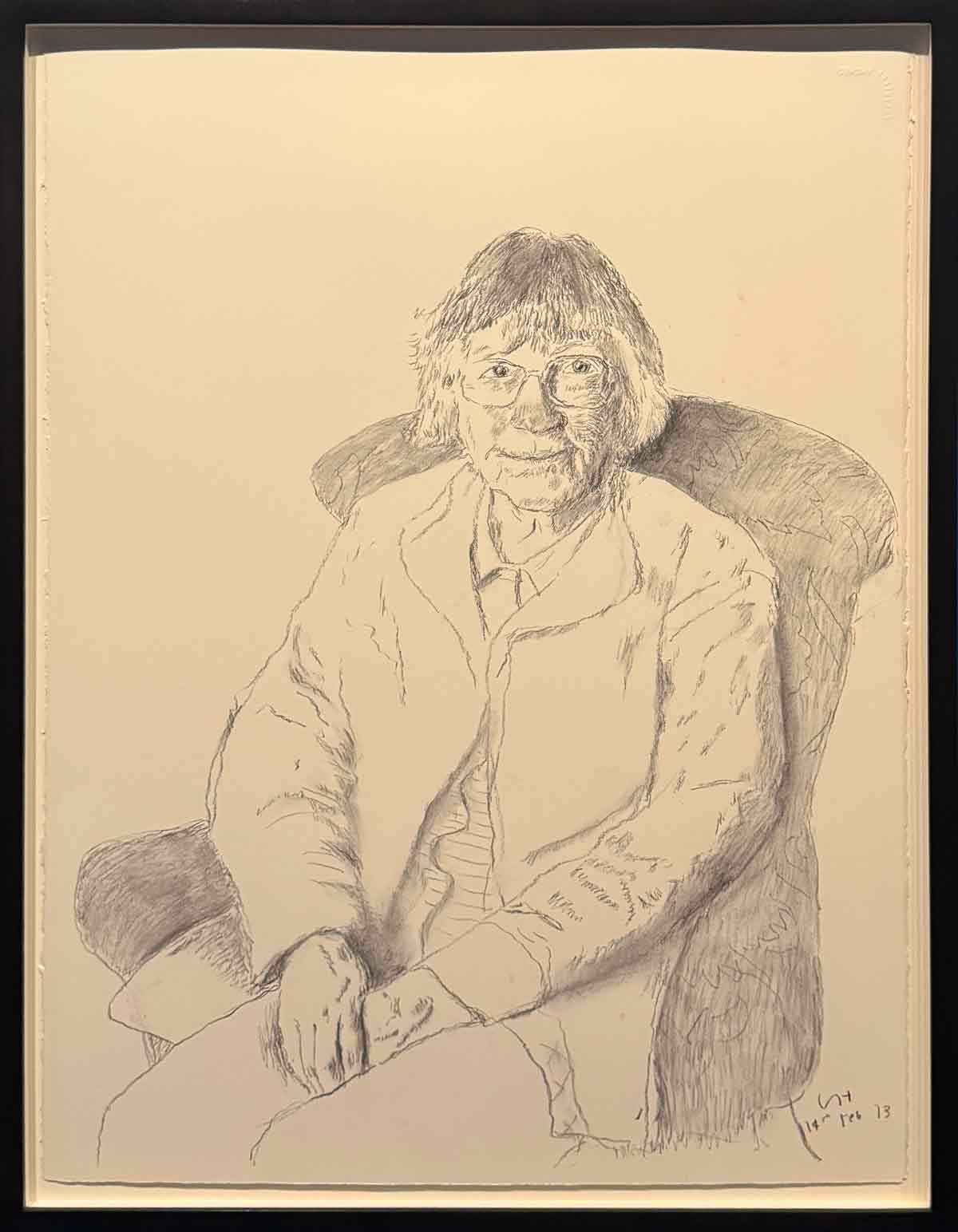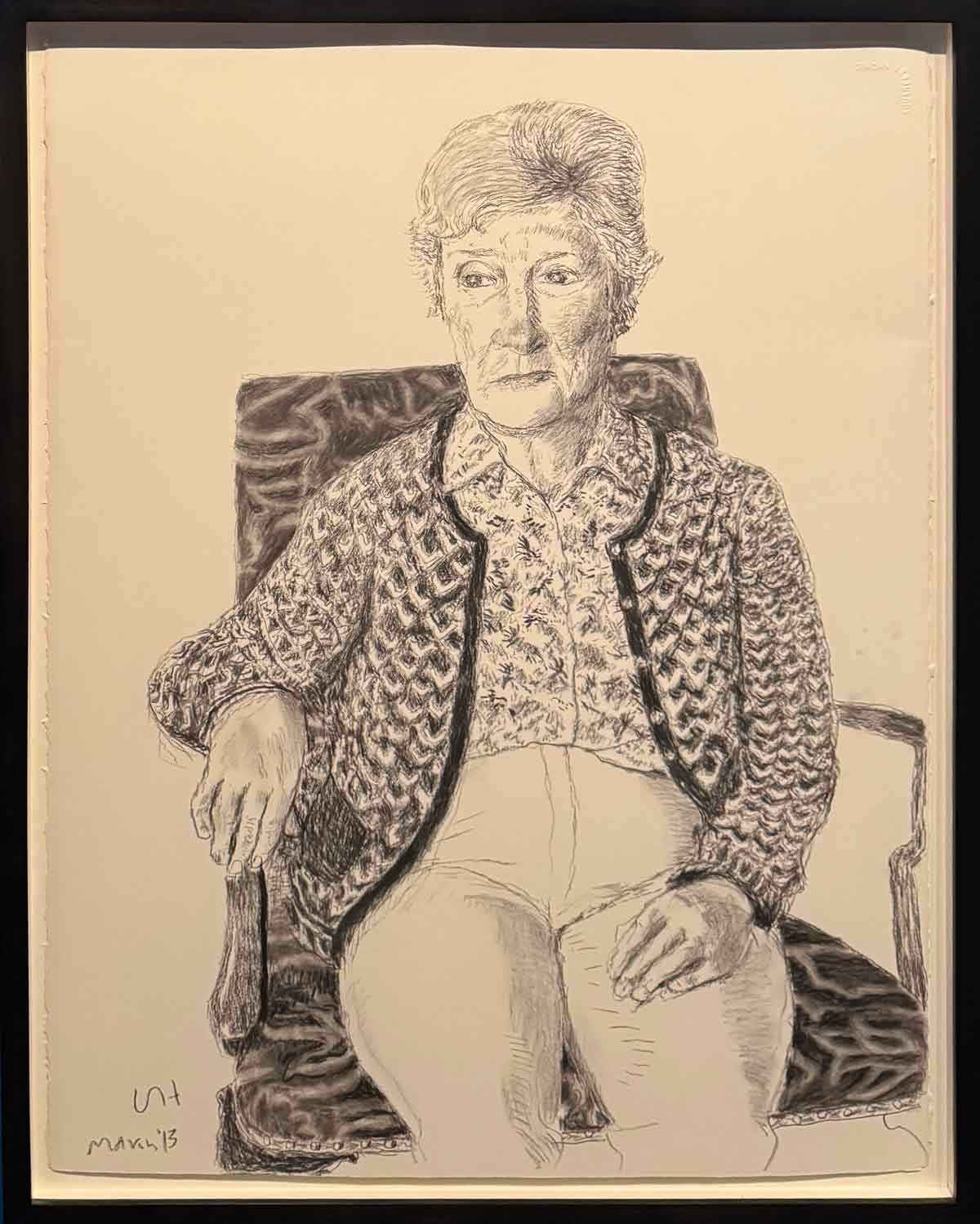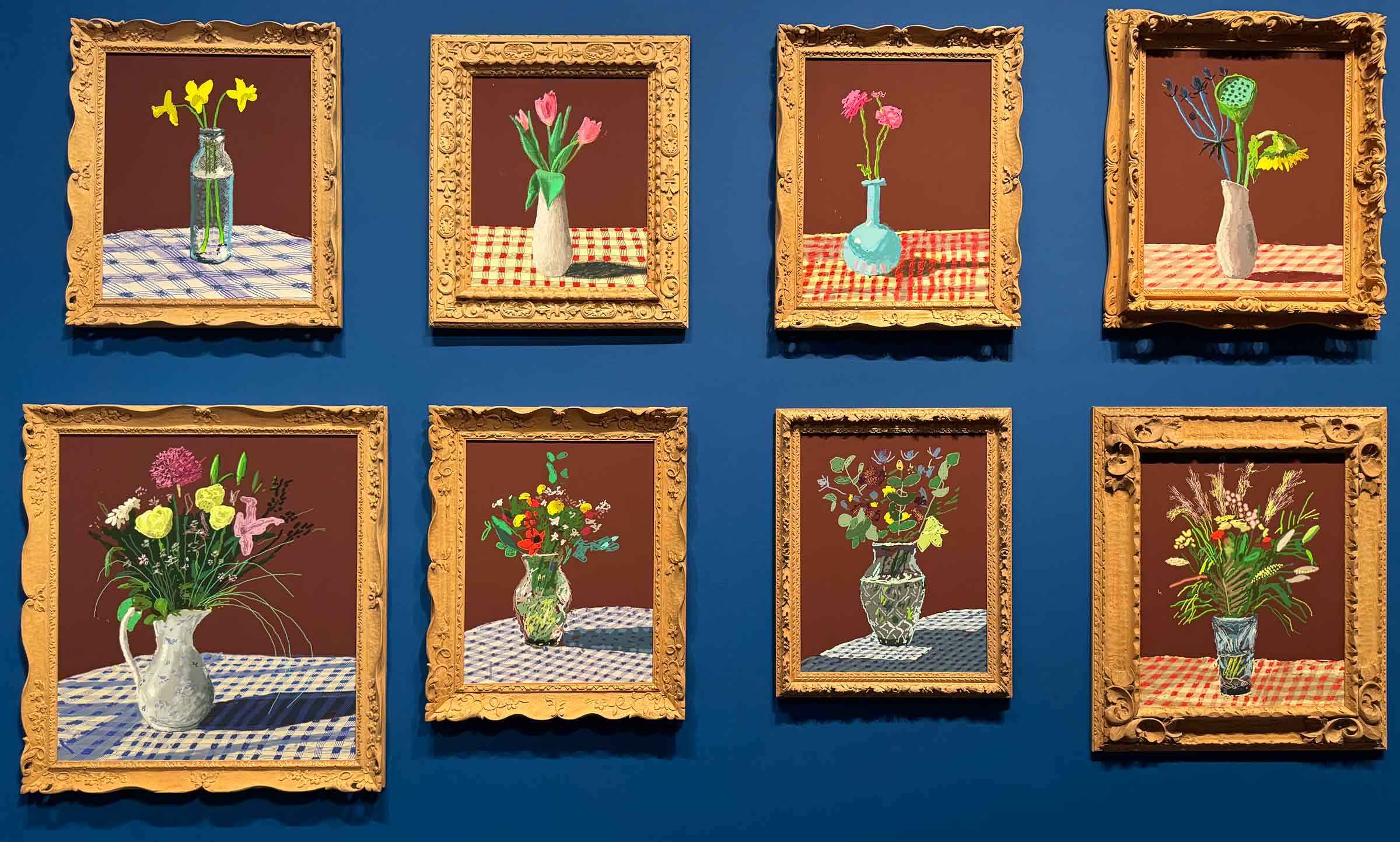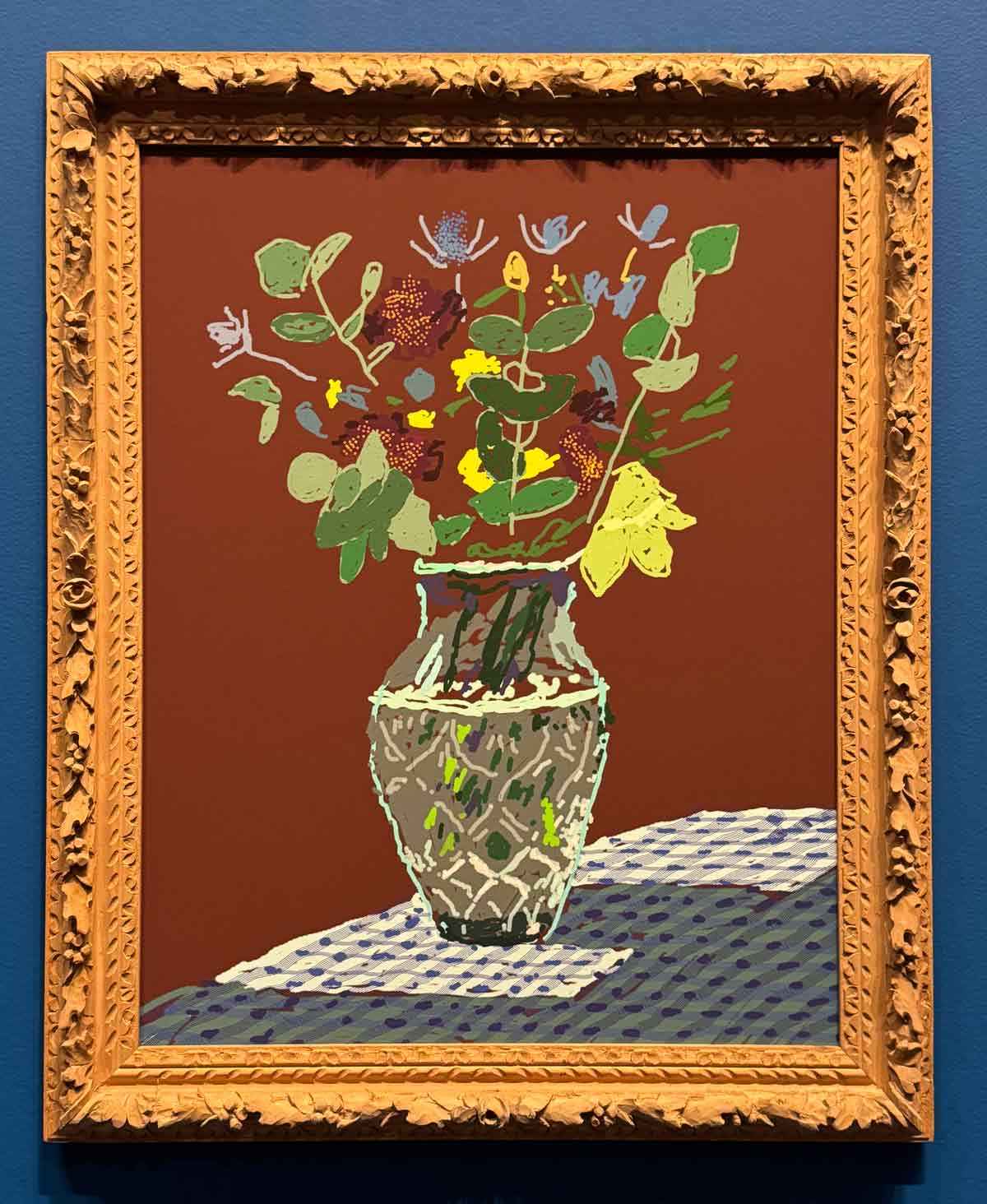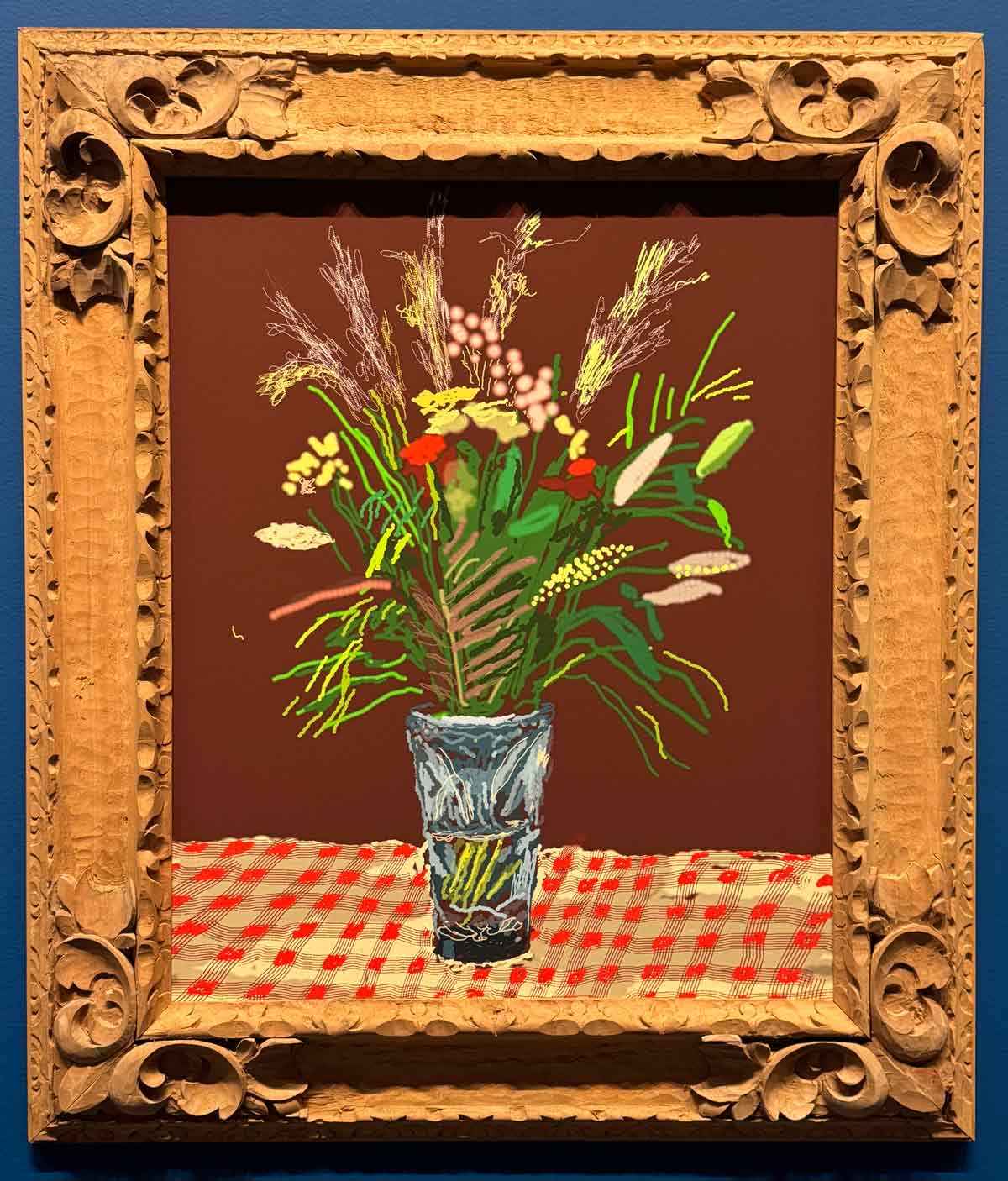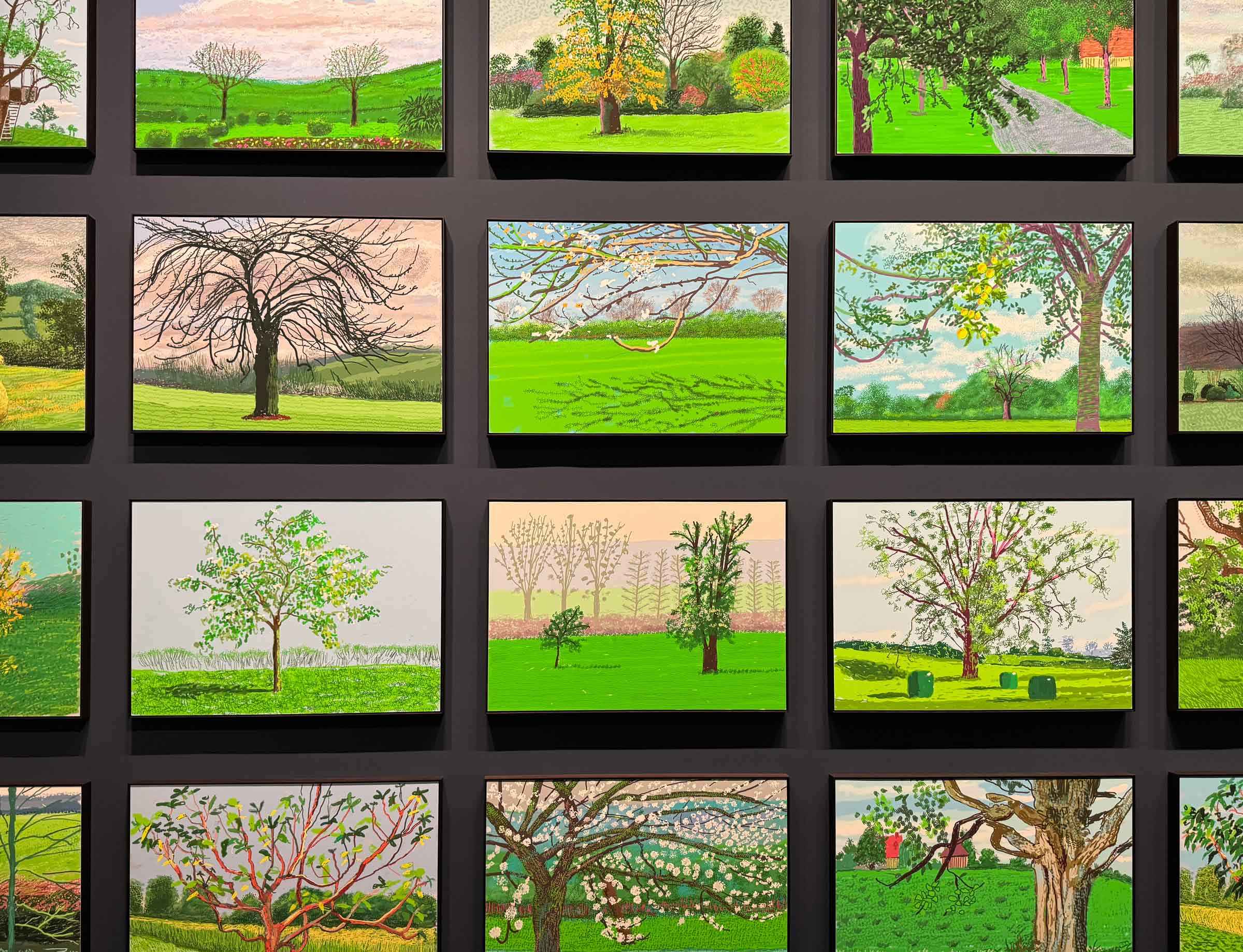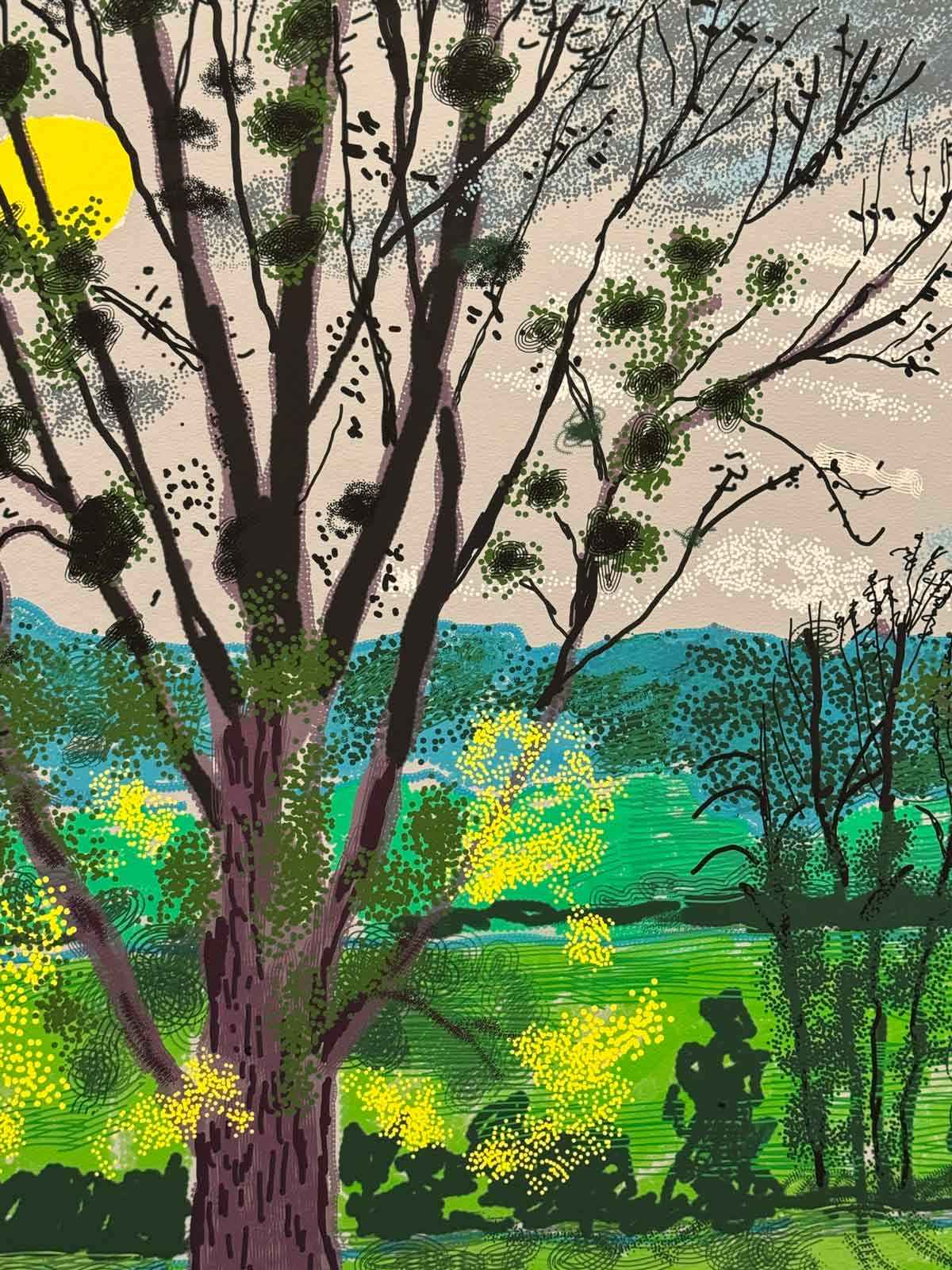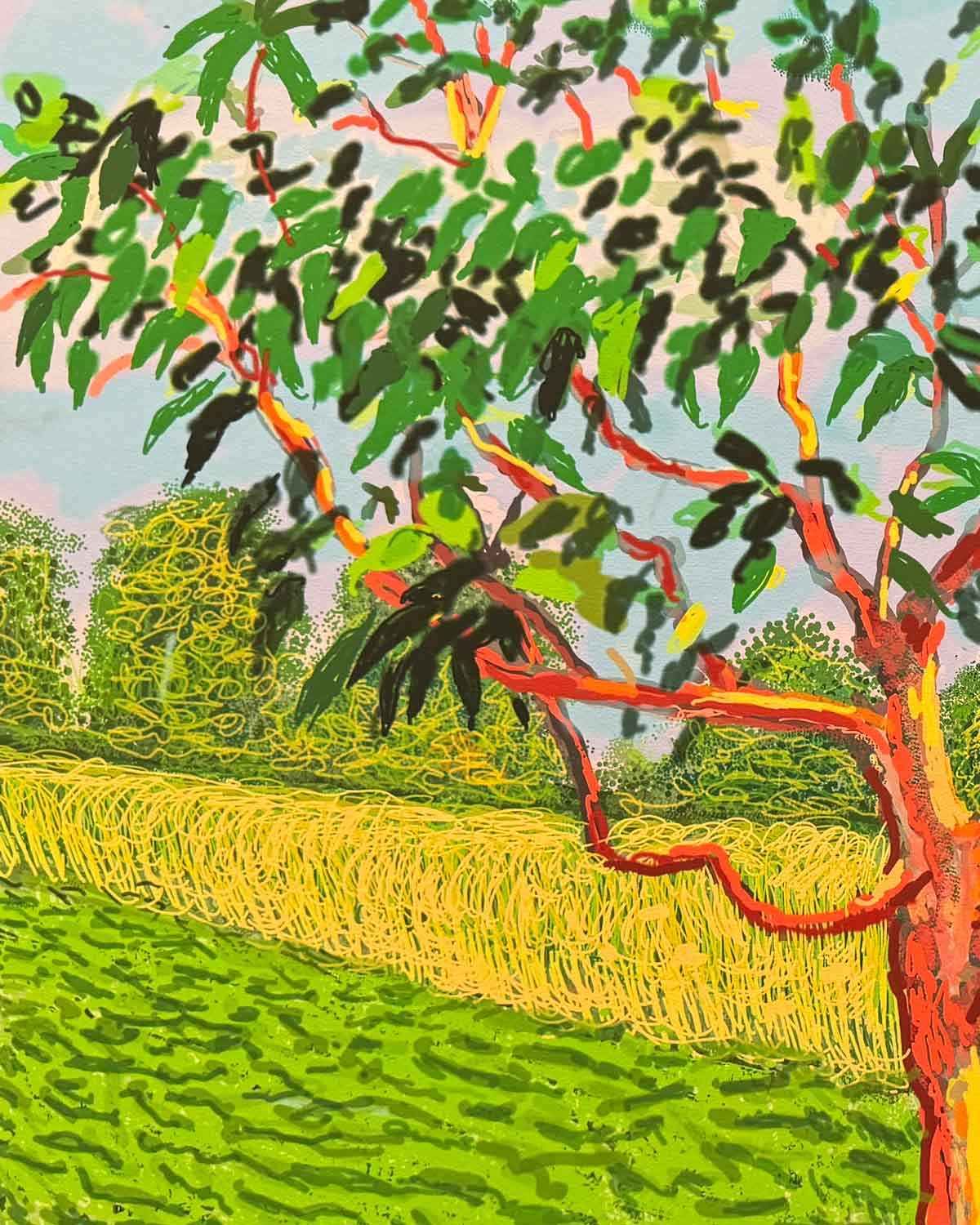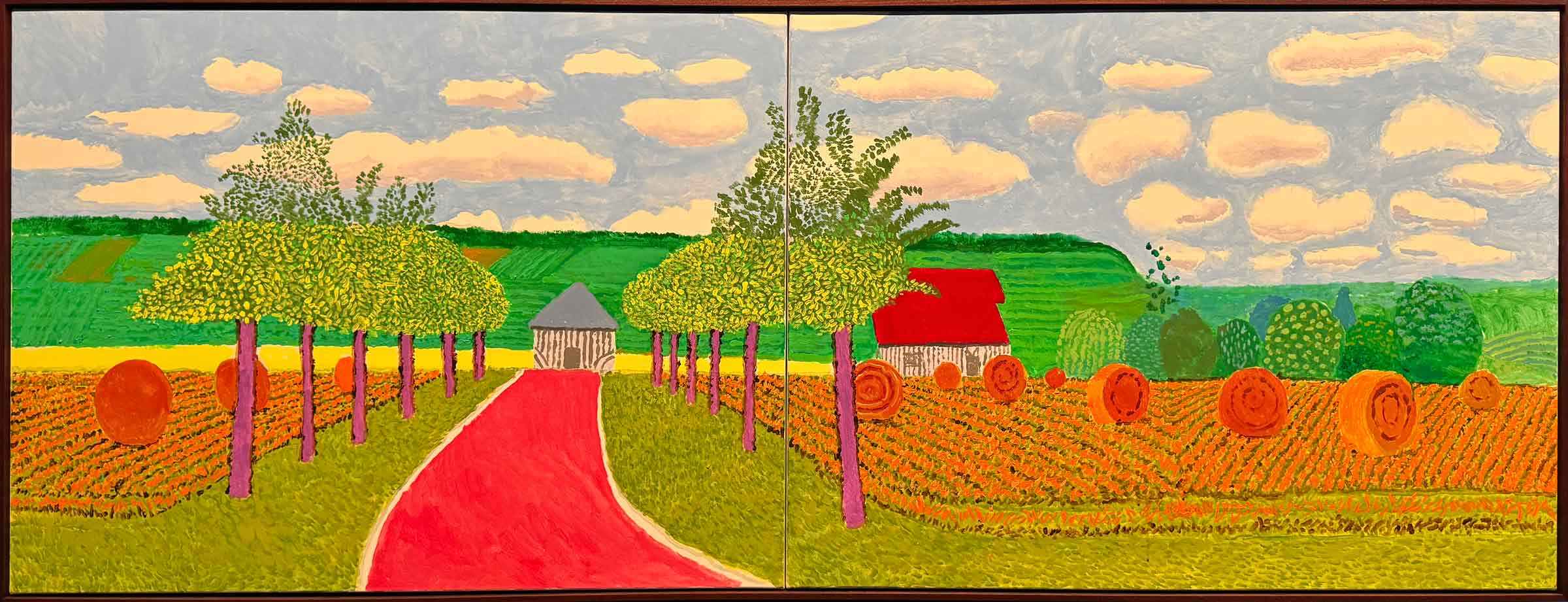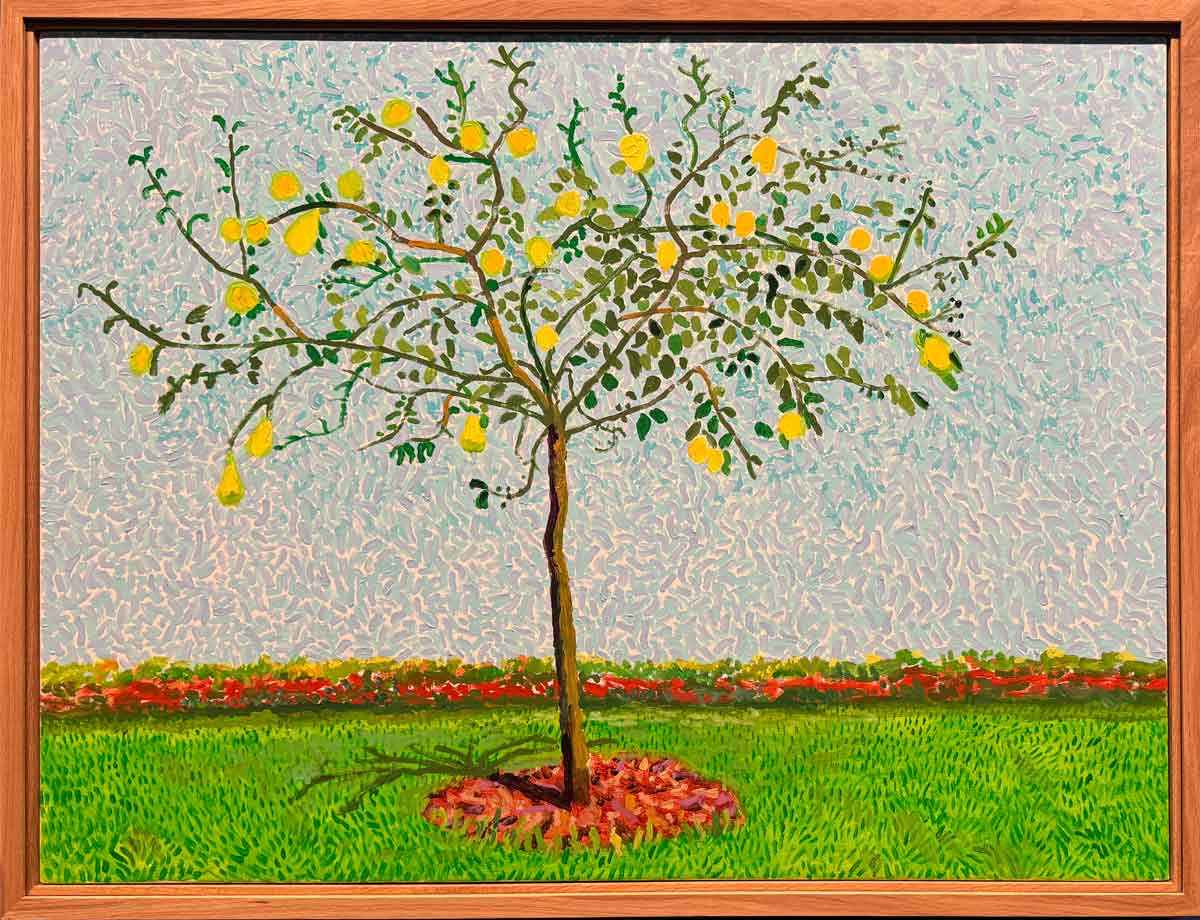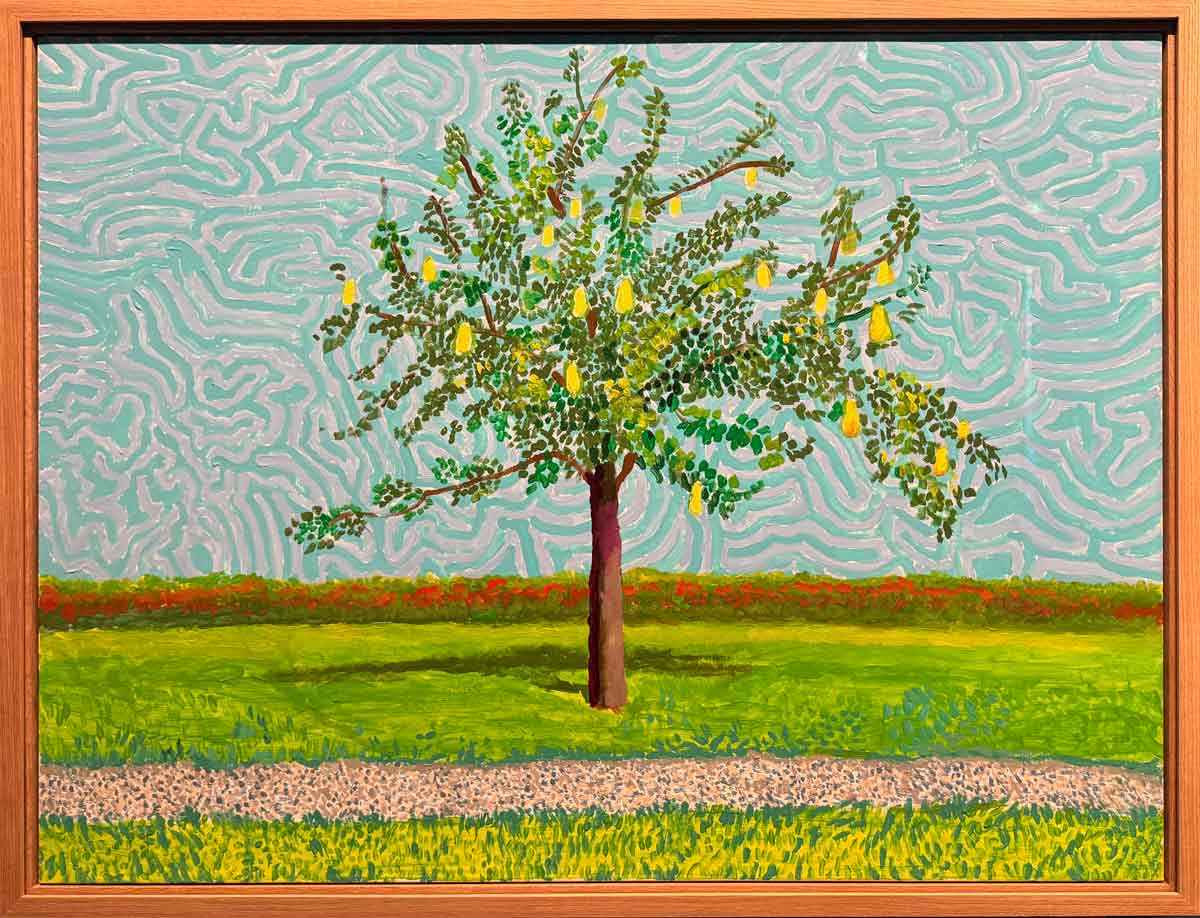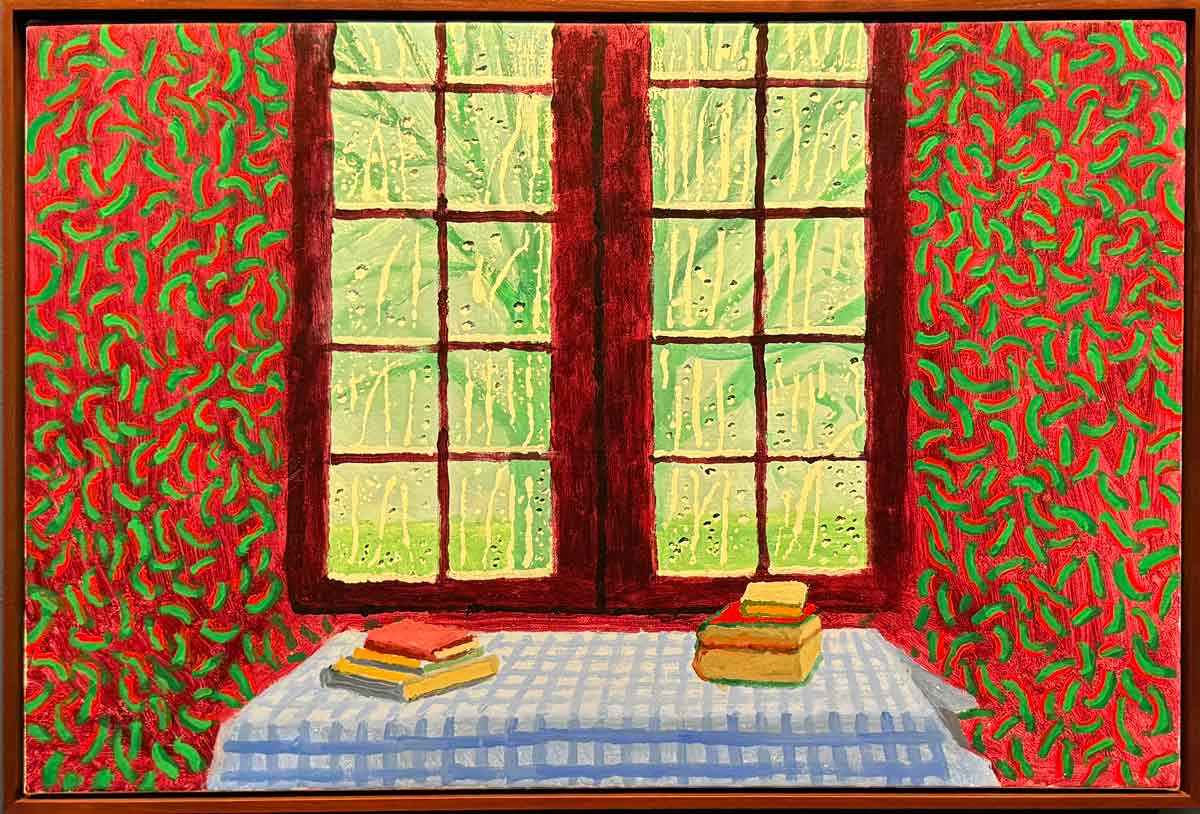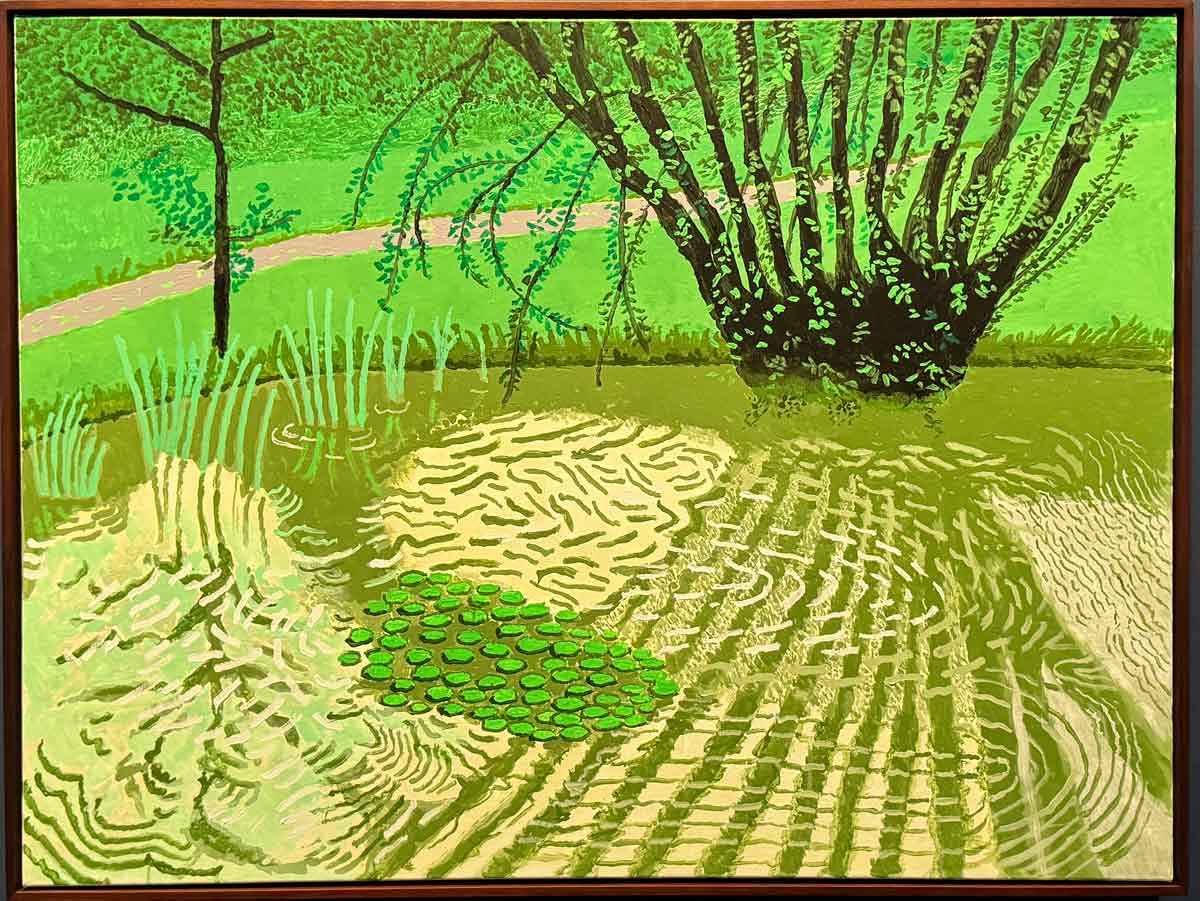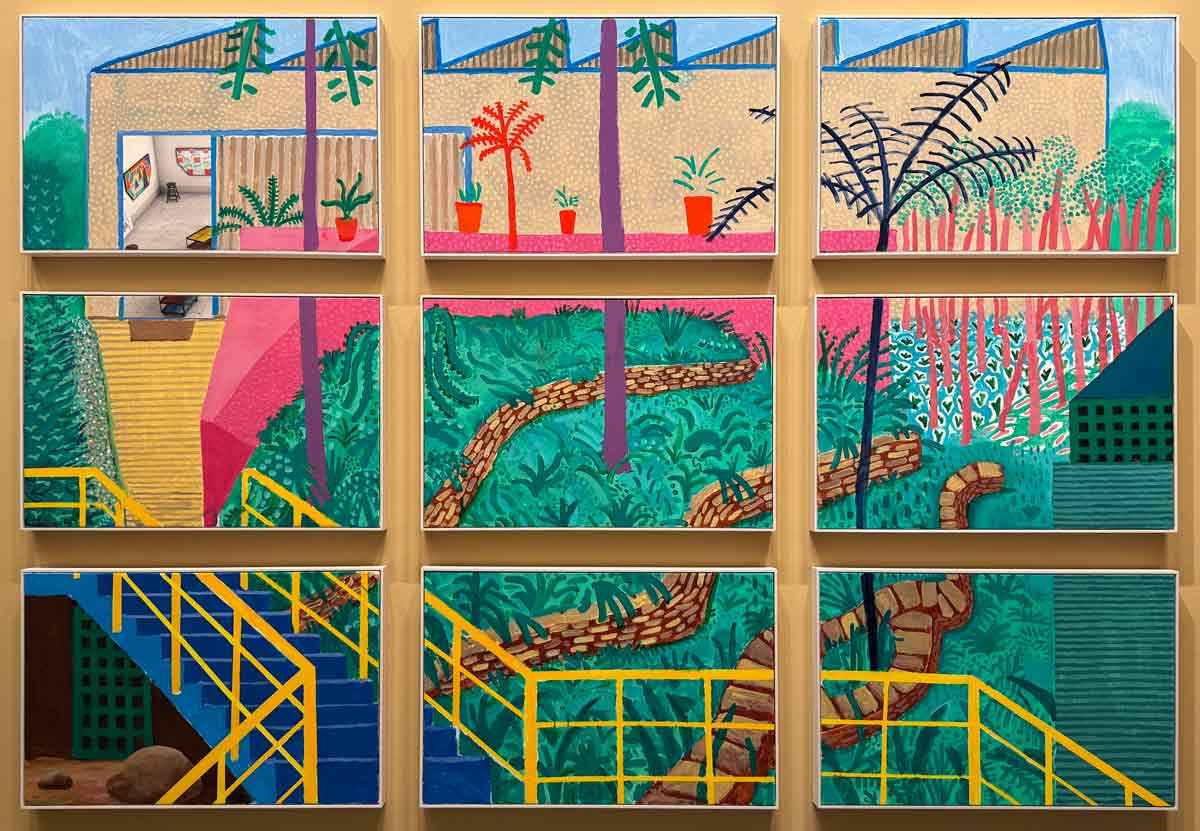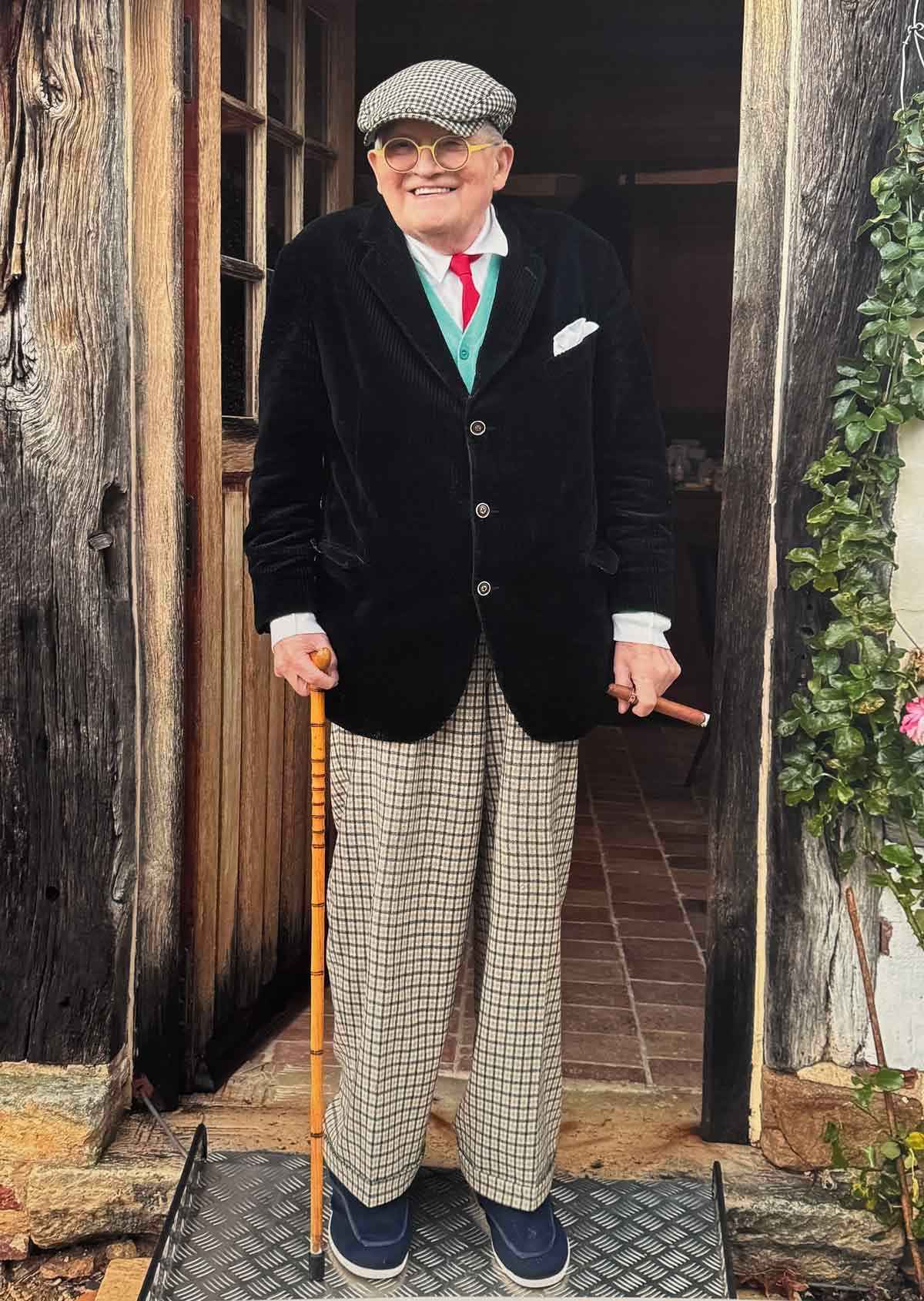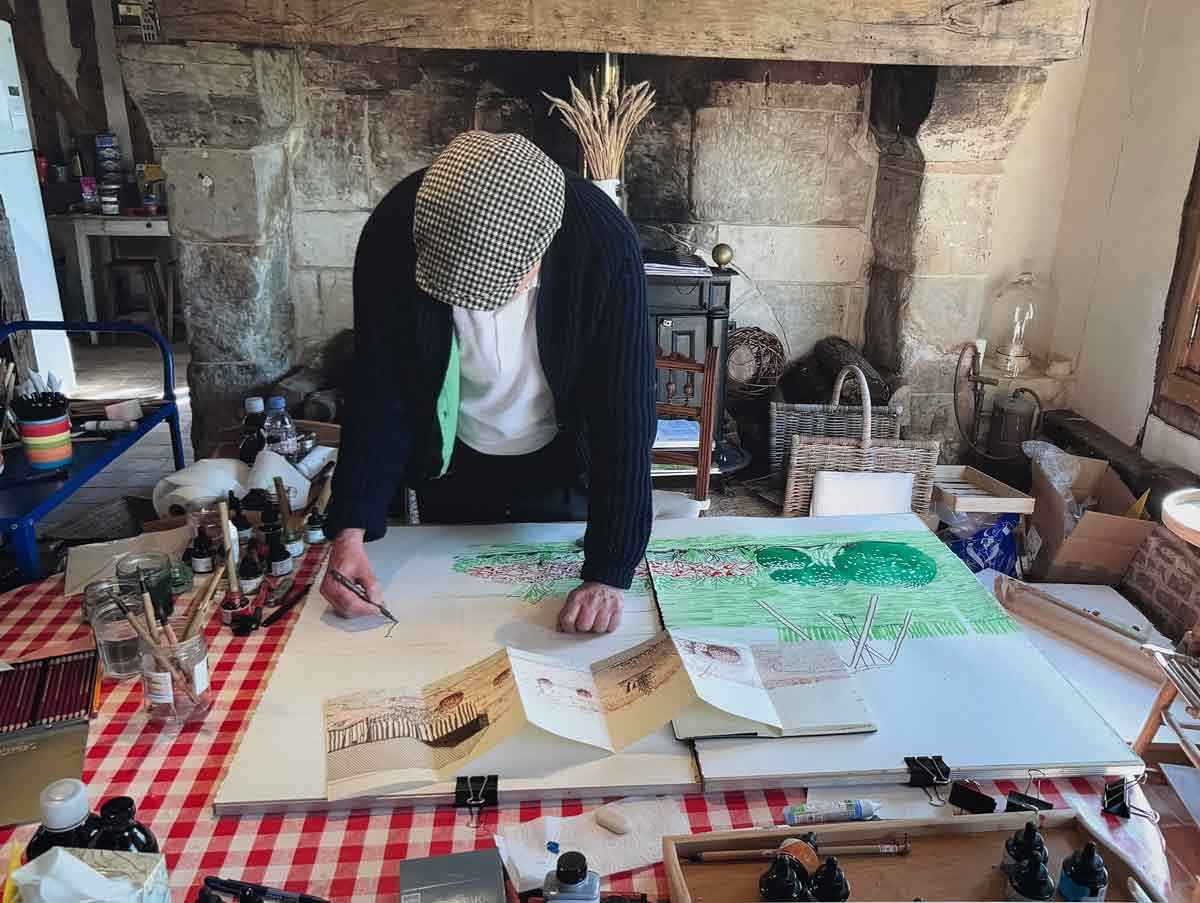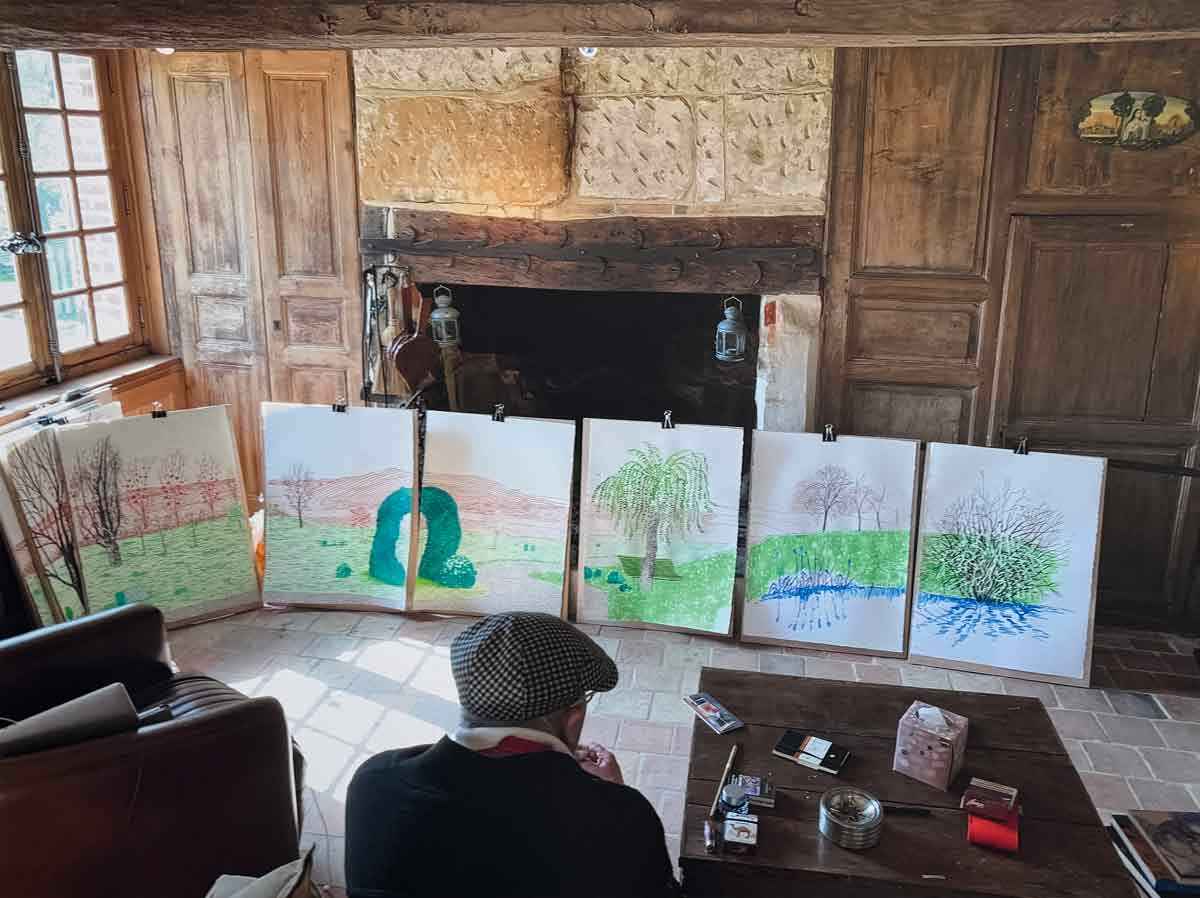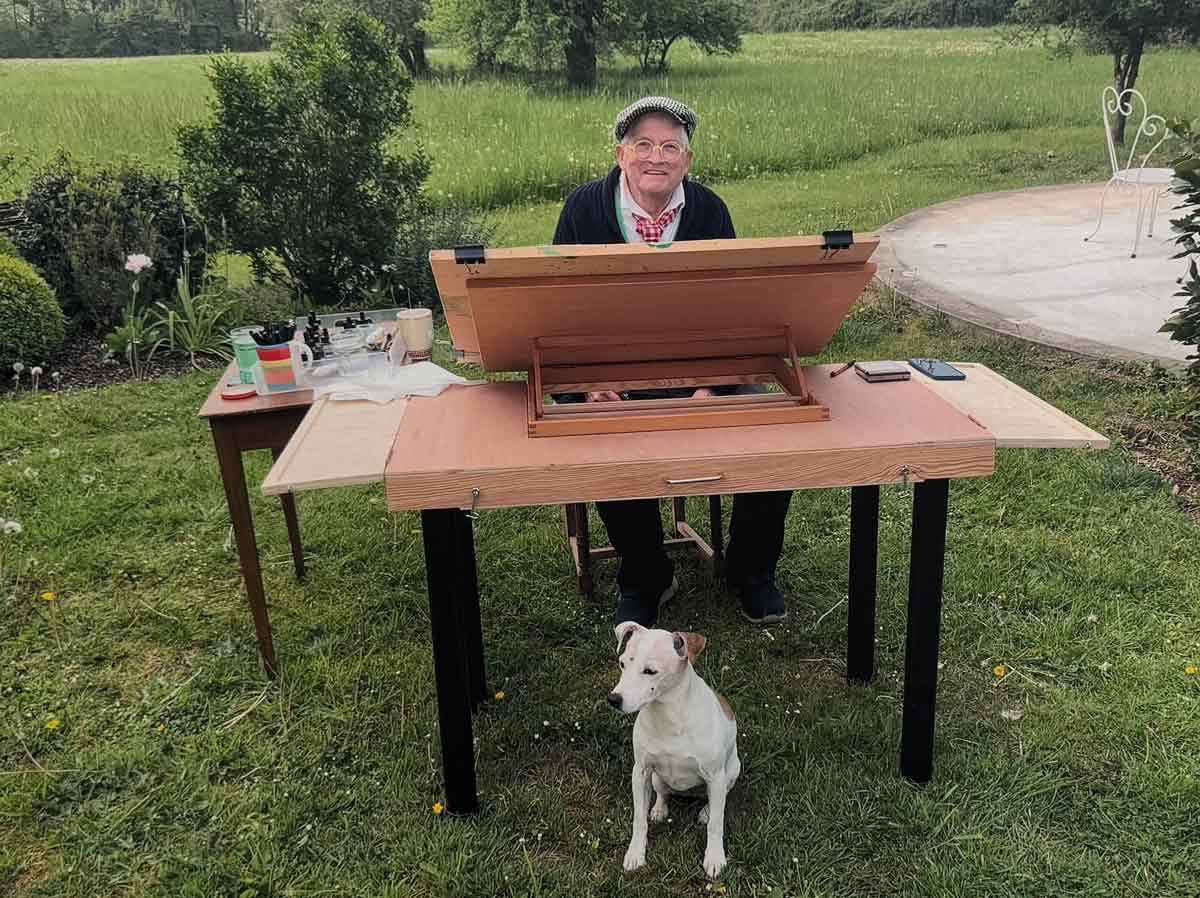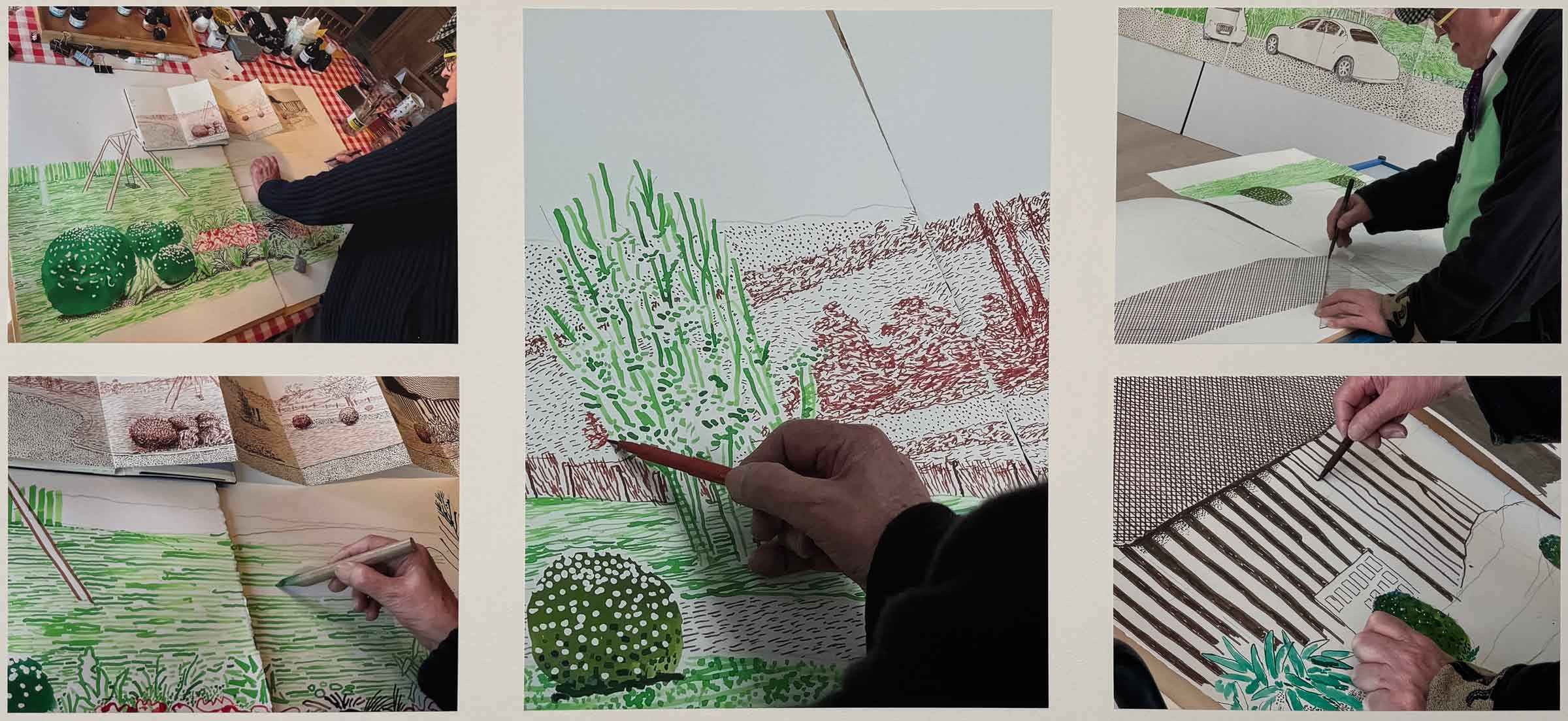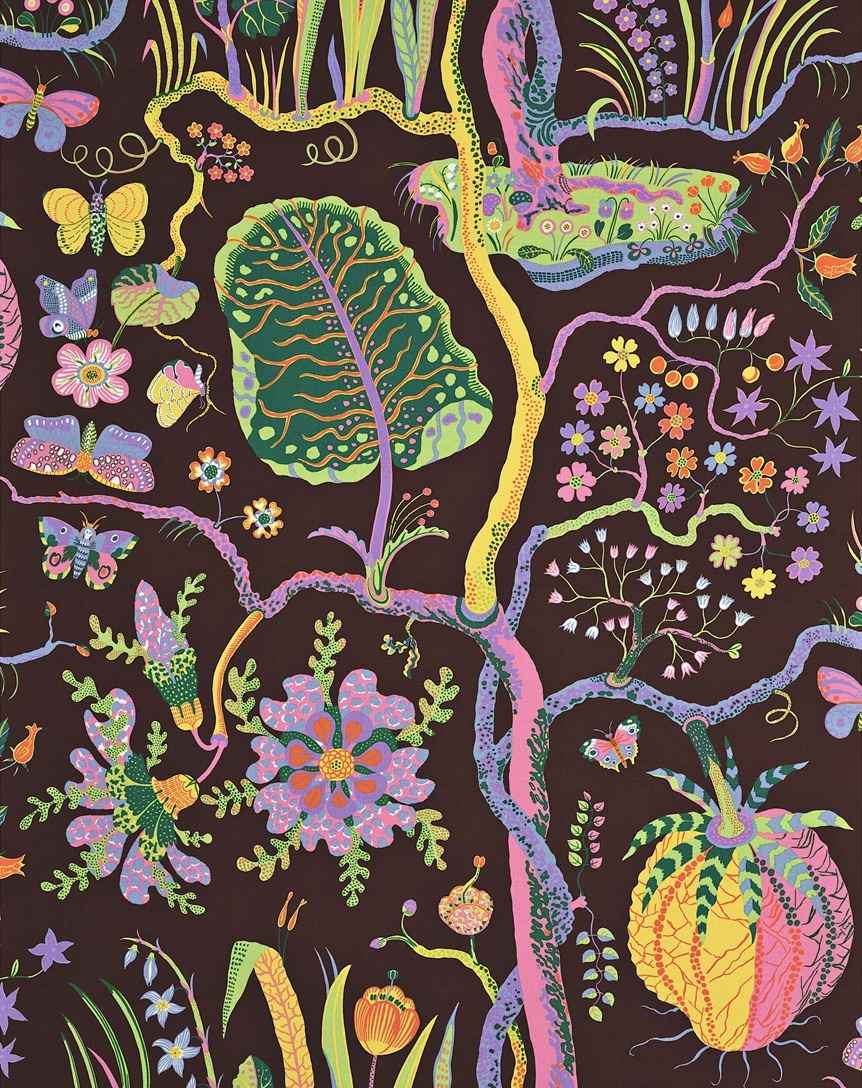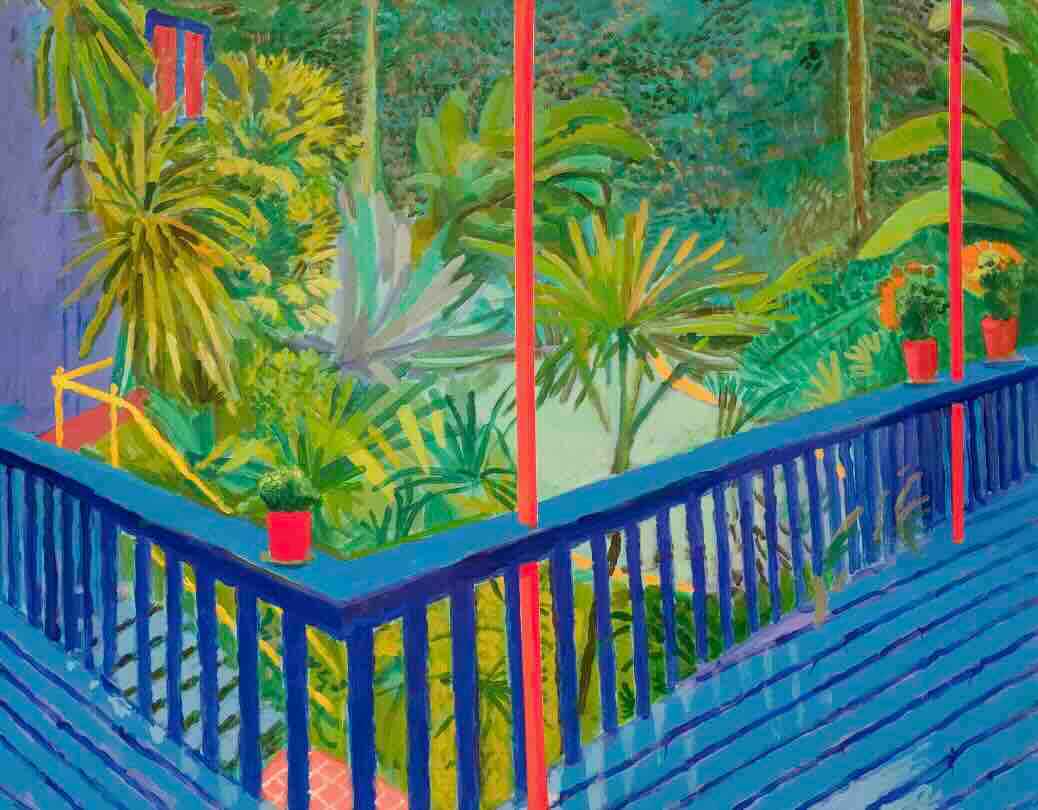
A Day with Hockney in Paris
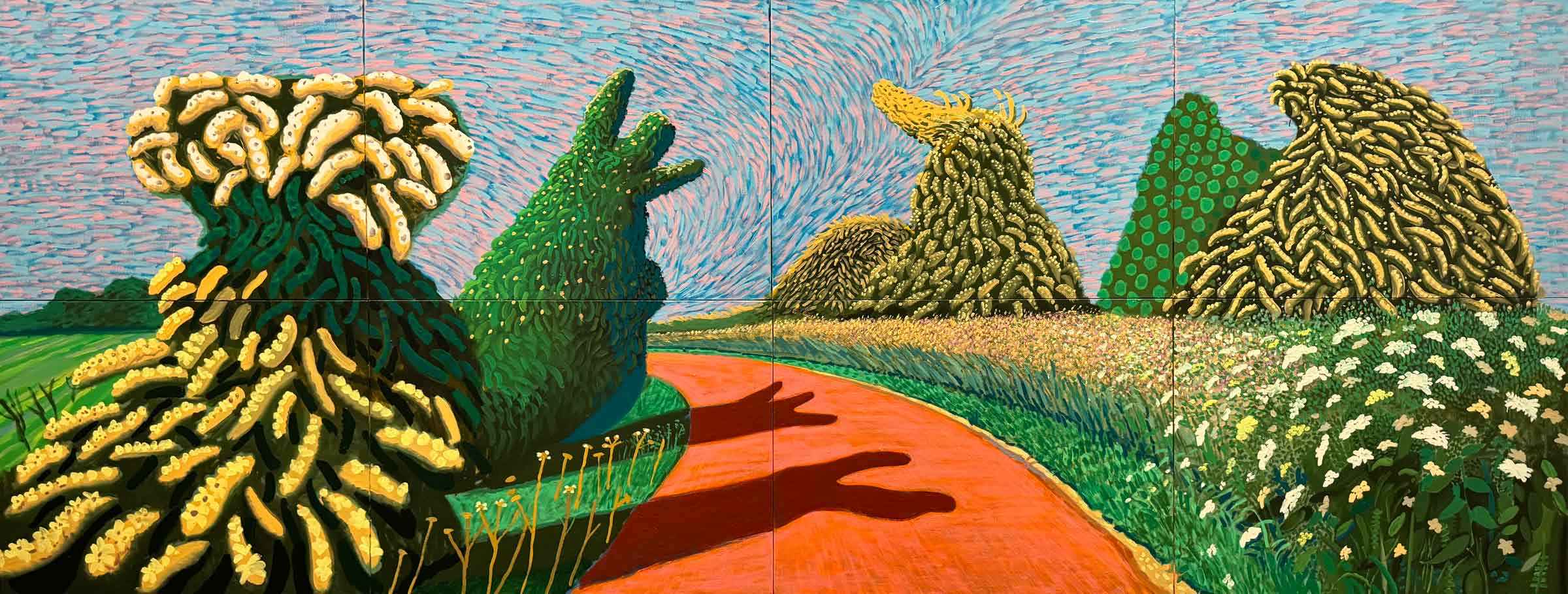
In early June, I took a day trip to Paris with my sister to visit the David Hockney retrospective at the Fondation Louis Vuitton. Hockney has always been my favourite artist – I think I was somewhat indoctrinated into his style from a young age. His use of colour, his joyful, playful approach to art – it’s all felt very familiar to me for as long as I can remember. I grew up near Bradford, after all, and weekends often involved mooching around Salt’s Mill – a place that feels like a shrine to Hockney. The mill itself, once a textile factory at the heart of Bradford’s industrial past, was converted into a glorious arts and culture centre in the late ’80s. Hockney was a key figure in its transformation – not only was he born in Bradford, but he donated a huge number of works to the space, and his connection to the mill helped put the whole place on the map. So yes, growing up with that in your backyard, you’re going to end up a little Hockney-mad.
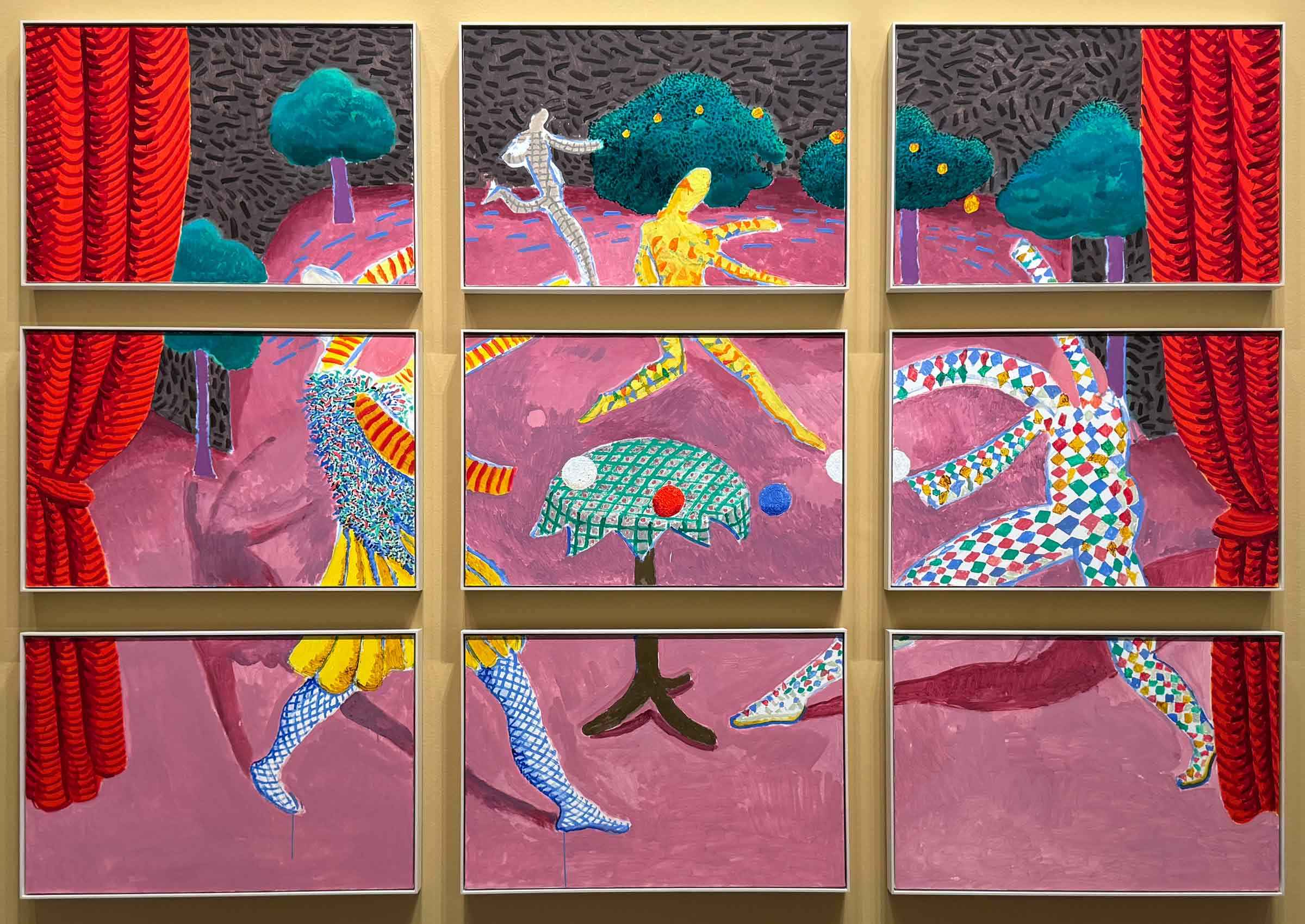
Now, no one needs another article detailing who David Hockney is or outlining his background (there’s always Wikipedia for that). So rather than trot out a bio, I’ll point you towards this wonderful little video from 2019 onLouisiana Channel. In just three minutes, Hockney talks about himself as an artist in a way that’s more insightful and revealing than any long-form biography I’ve read.
I’ve seen as many Hockney exhibitions as I can get myself to over the years, but this one was by far the most extensive. While he’s been working for over 60 years, this exhibition focuses on the last 25, with more than 400 pieces spread across the galleries. It covers his journey from the early days in London, to his Californian period, back to Yorkshire, and now his latest work from Normandy. I’d seen many of the pieces before, scattered here and there, but experiencing them all together – so beautifully curated and displayed – was completely immersive. Genuinely mind-blowing.
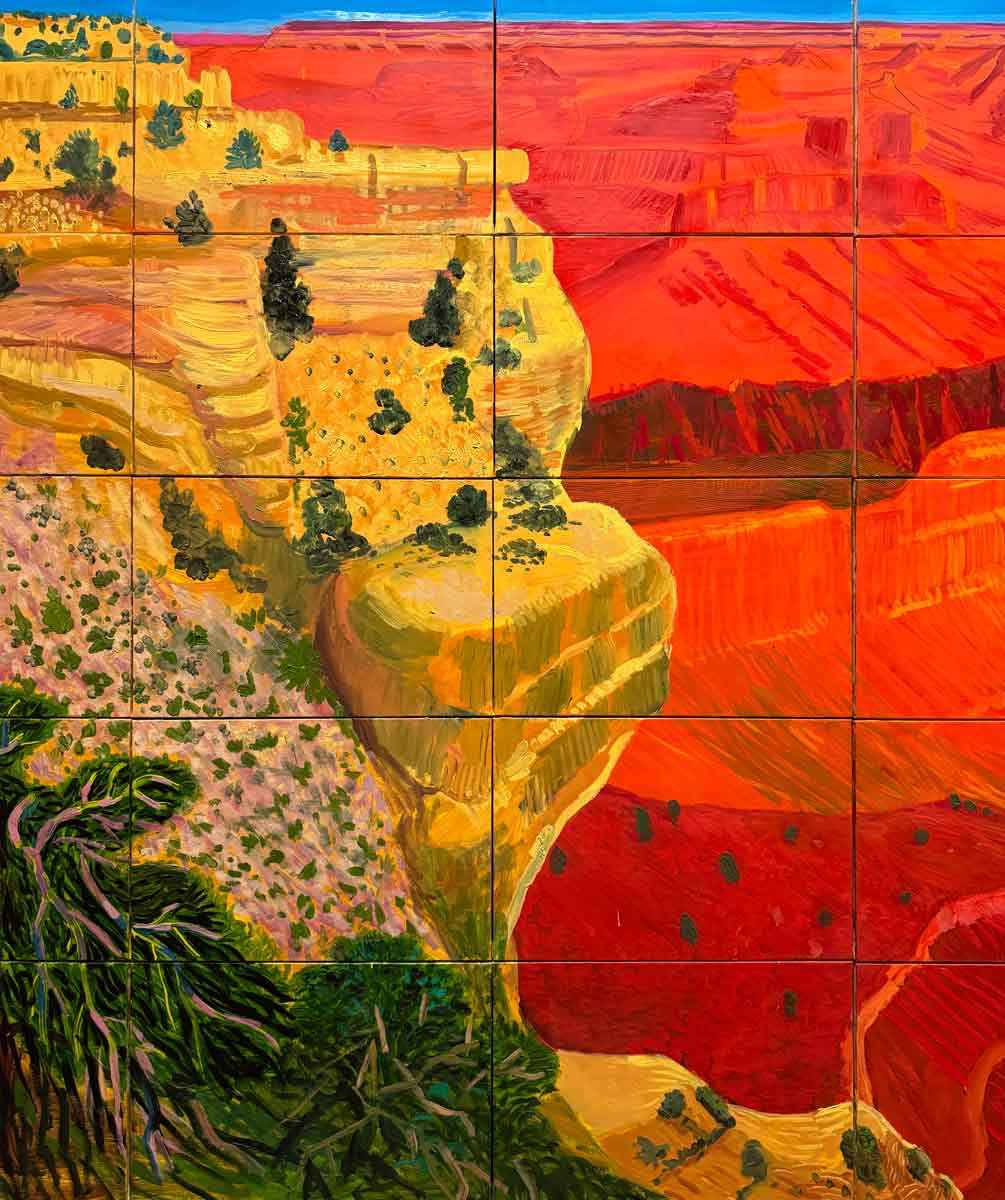
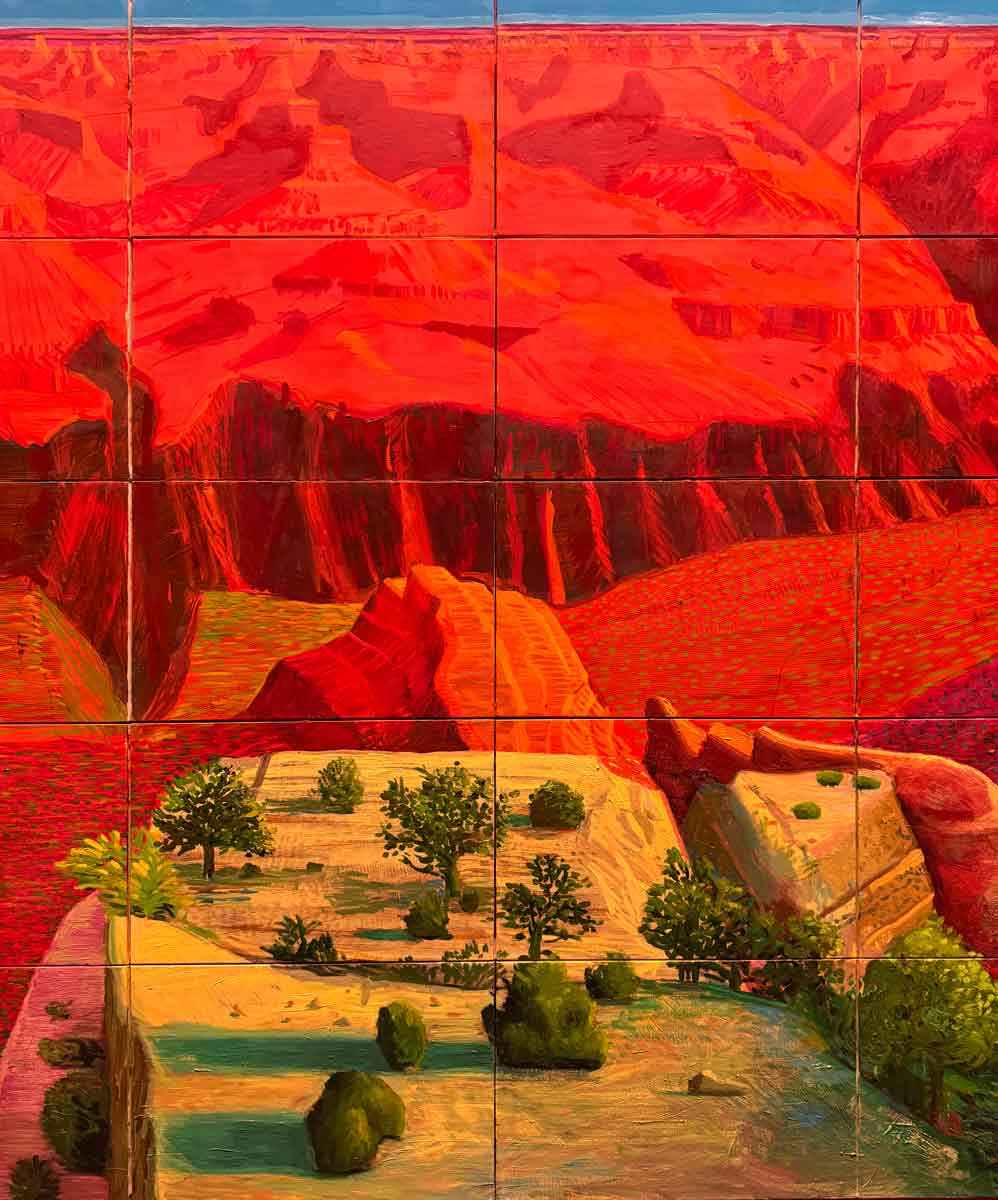
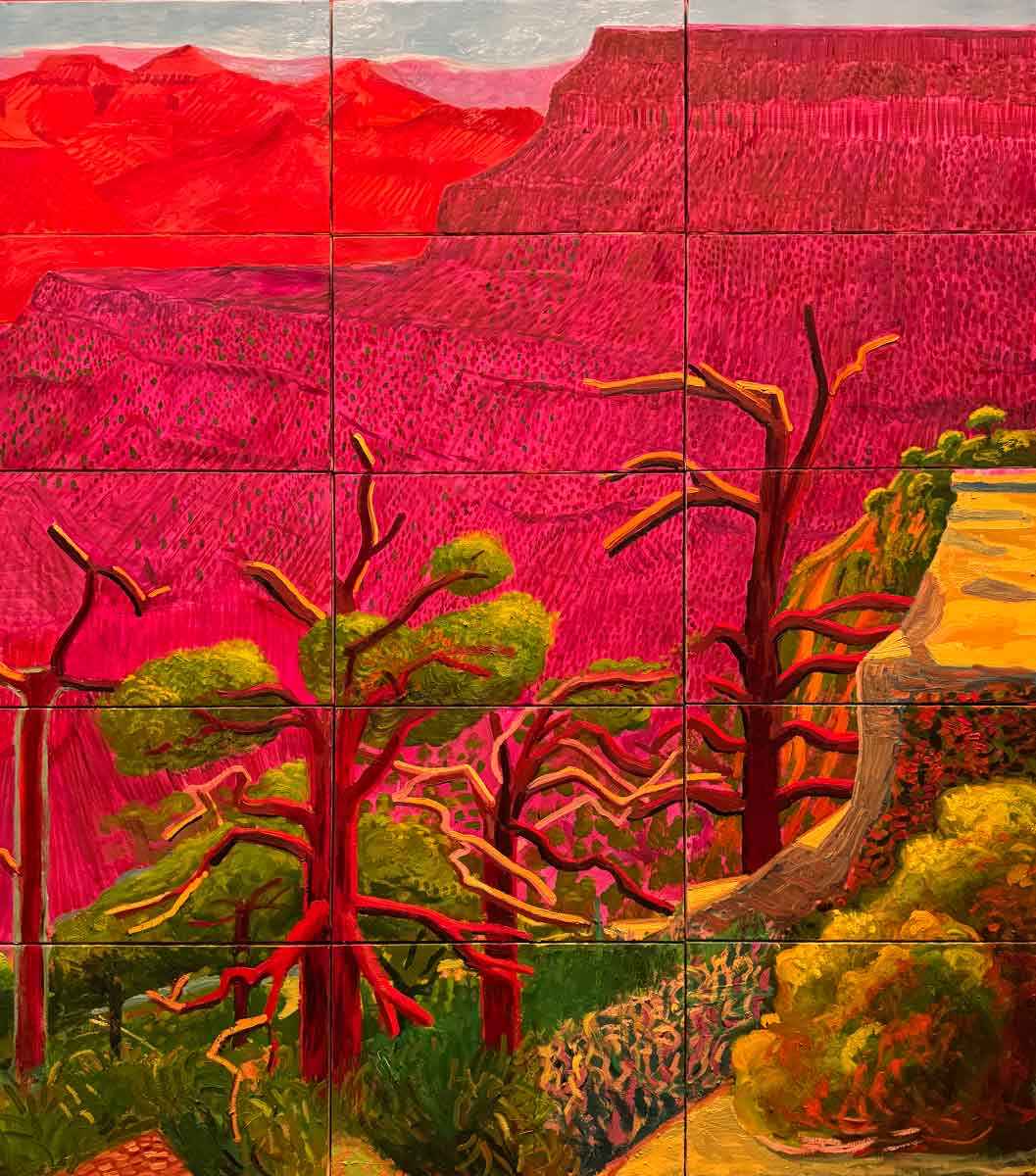
So in this article, for those who can’t make it over to the exhibition in person, I wanted to give you a sense of what it was like – through 50 images. If there’s any way you can get to Paris before it closes, do it. It was honestly one of the best exhibitions I’ve ever seen.
Before we dive into the images, I just want to pin down the three things that always leave me feeling so inspired by Hockney:
Art can take itself so seriously. Maybe it always has, or maybe we’re just in a time where originality is trickier to find. Either way, a lot of contemporary art feels… dry. If you make something beautiful, you’re often dismissed as a decorative artist. If your work looks grim but is loaded with conceptual meaning, then you’re taken seriously.
Yet so many of the artists I love – Matisse, Bonnard, Vuillard – would likely be written off today as decorative. The joy in simply depicting the world around you is no longer considered enough. We’re supposed to challenge convention, deconstruct form, issue warnings.
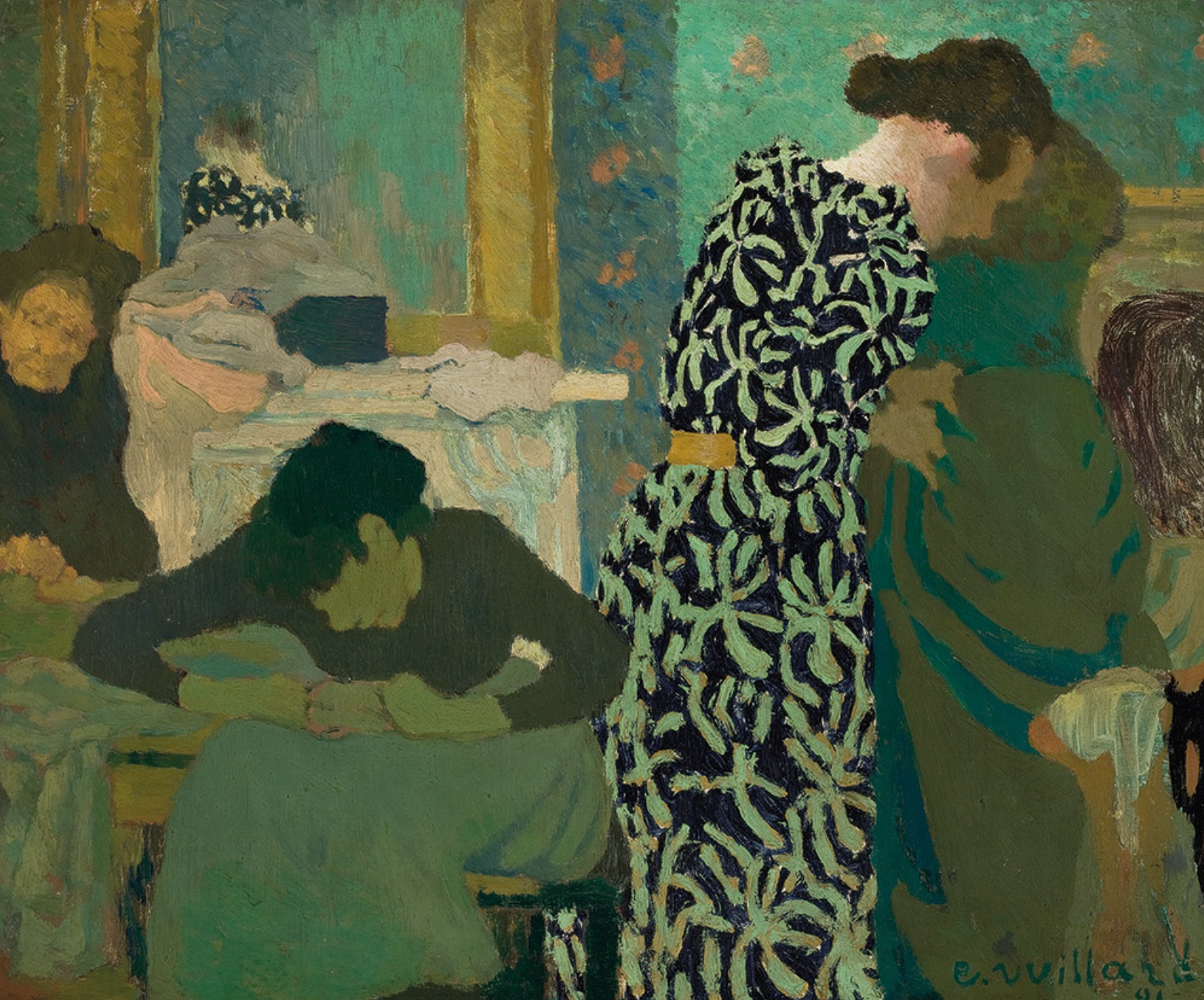
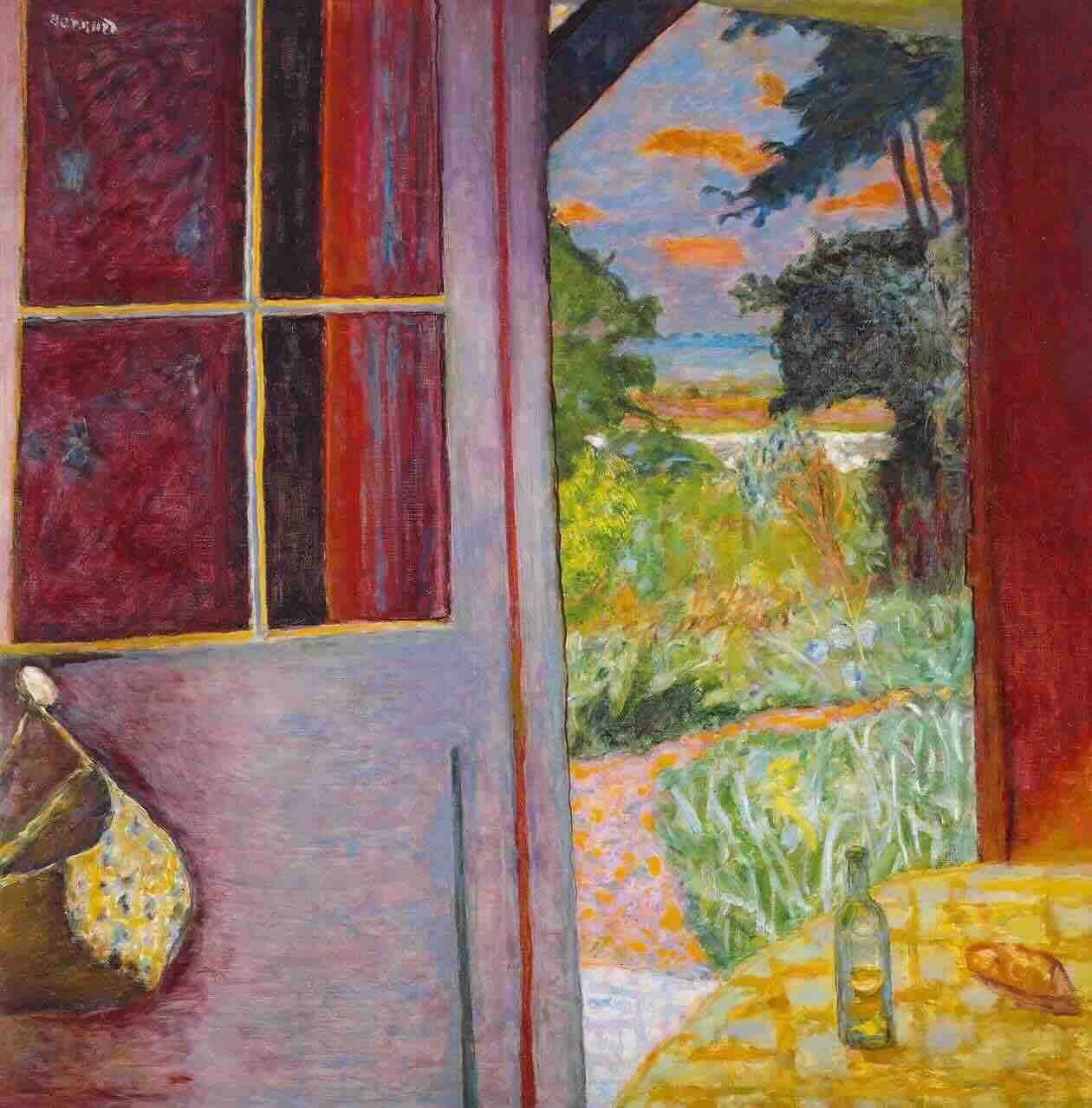
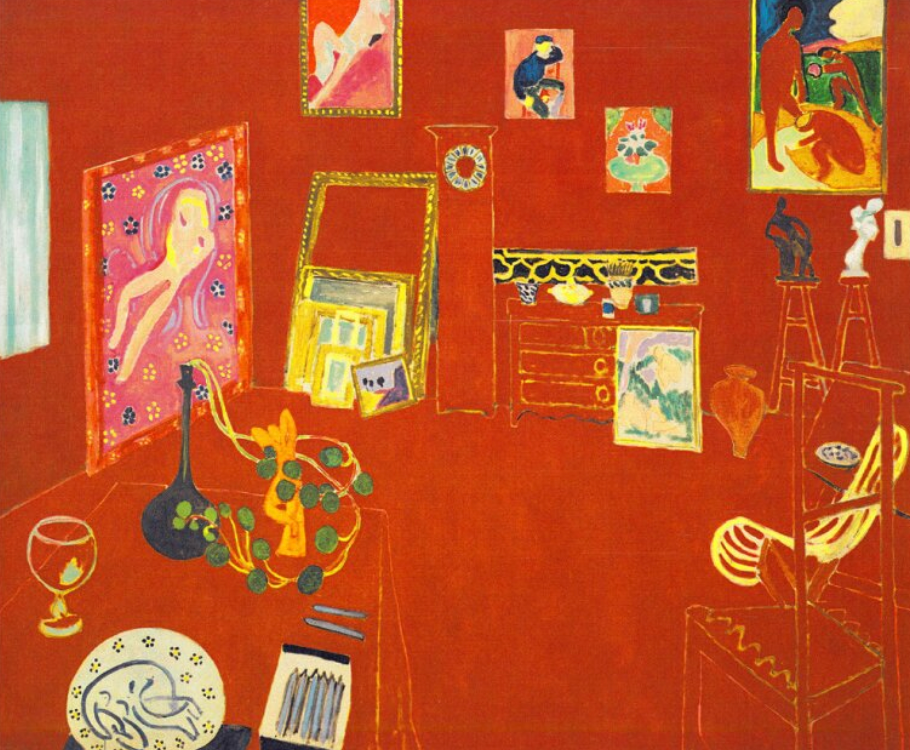
But Hockney isn’t interested in all that. He’s never been about existential dread. Imagine a young artist at art school today proposing a series on the arrival of spring. It wouldn’t feel “substantial” enough. And yet Hockney, with all his experience and unapologetic confidence, can get away with creating entire collections focused on moonlight, trees, or puddles – and it never feels slight. It feels joyous. He looks at nature with complete attentiveness and captures colour, contrast, and change in a way that makes you feel something. His work doesn’t require interpretation. It just lifts you. And that’s what I love.

More than anything in life, I love colour. I get a genuine, physical reaction to it. The right shade of tomato red? Practically makes me emotional. So obviously, I’m going to love Hockney. He’s an absolute master of colour. He sees tones that most people miss – the purple in a tree trunk, the red in a leaf, the yellow in a puddle, the violet of a morning sky.
From a distance, his paintings feel entirely coherent, even realistic. But as you get closer, it becomes harder to understand how he’s done it. The colours are wild, improbable – and yet somehow, they work. They create something entirely familiar. His instinct for colour feels like some kind of magic. If I manage to understand colour to even a tenth of the degree he does by the time I hit 80, I’ll consider it a success.
Hockney is fearless when it comes to change. He doesn’t sit still. He doesn’t just stick to what he’s known for. Whether it’s driven by curiosity or practicality, he’s always moving forward. Take his iPad work – a whole new way of working, which raised many eyebrows. And yet, he embraced it entirely. Or the way he creates enormous paintings using grids of smaller canvases – possibly a nod to the physical demands of ageing, but also just a different way of thinking.
Whatever you make of the digital work (for the record, I love them), the fact that he’s still experimenting is so inspiring. As he puts it, “I just happen to be an artist who uses the iPad, I'm not an iPad artist. It's just a medium. But I am aware of the revolutionary aspects of it, and its implications.” You can watch him say this – and a bit more besides – in this interview. It’s such a good reminder to stop worrying about what others think and just enjoy making things your own way.
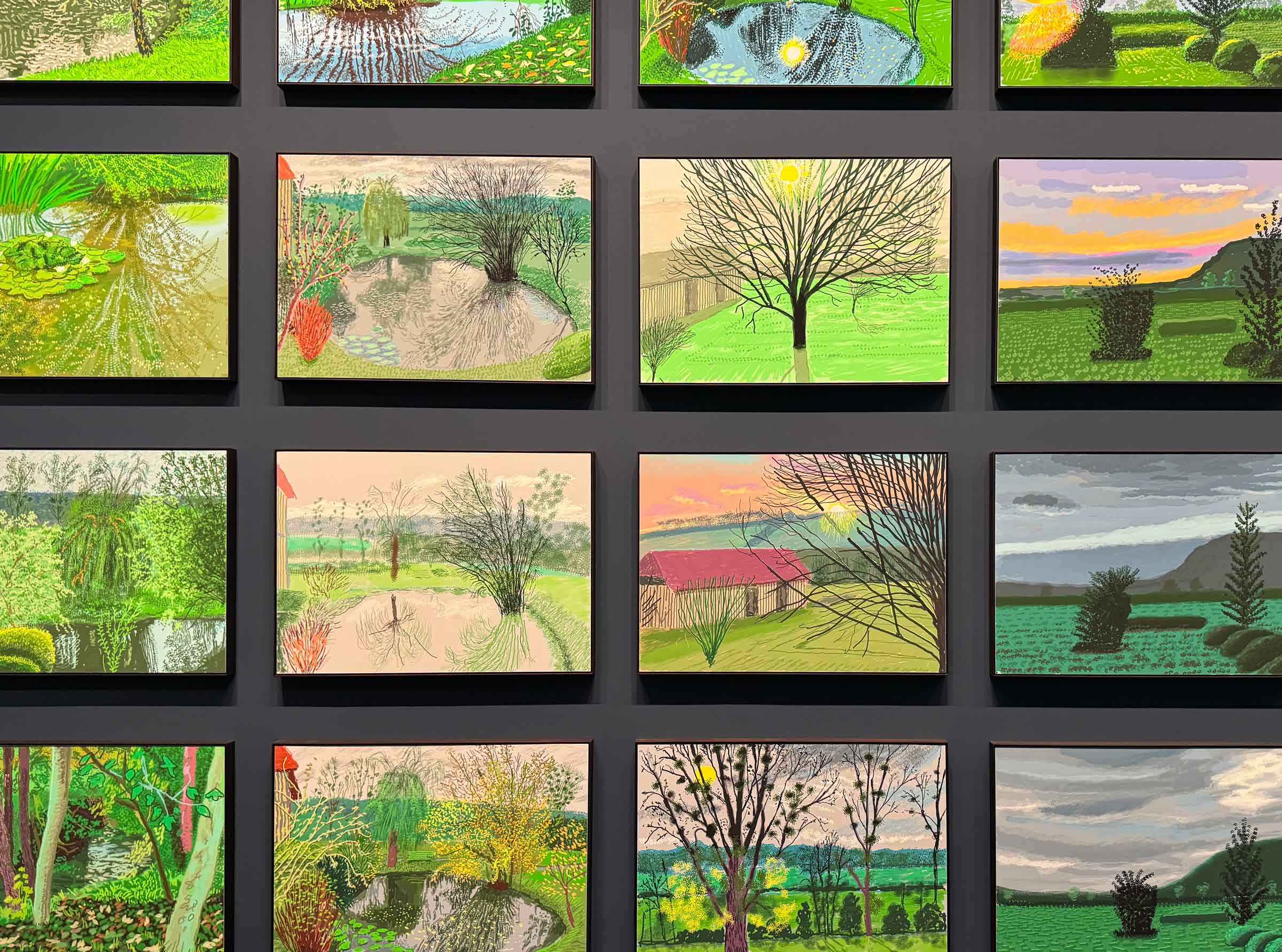
Now, the one part of the exhibition I haven’t included here is the immersive animation piece, Hockney Paints the Opera. And that’s because it was so brilliant, so inventive, and so completely its own thing that I think it deserves its own article. It was the standout moment of the whole show – and I really hope it tours. I’ve honestly never seen anything like it. So watch this space.
In the meantime… come with me on a little tour of the show, through 50 pictures.
